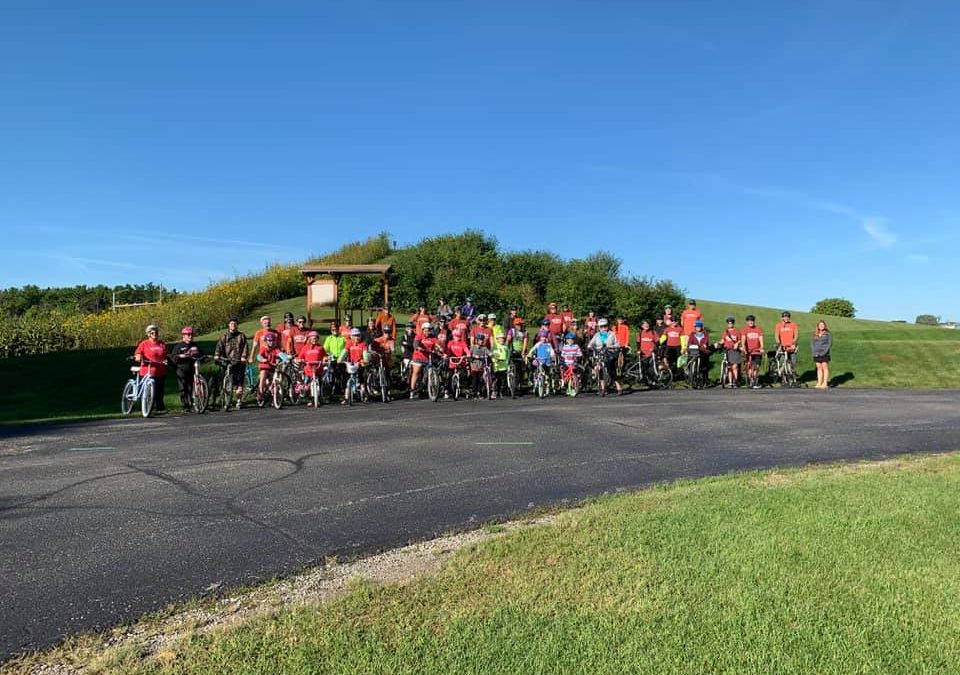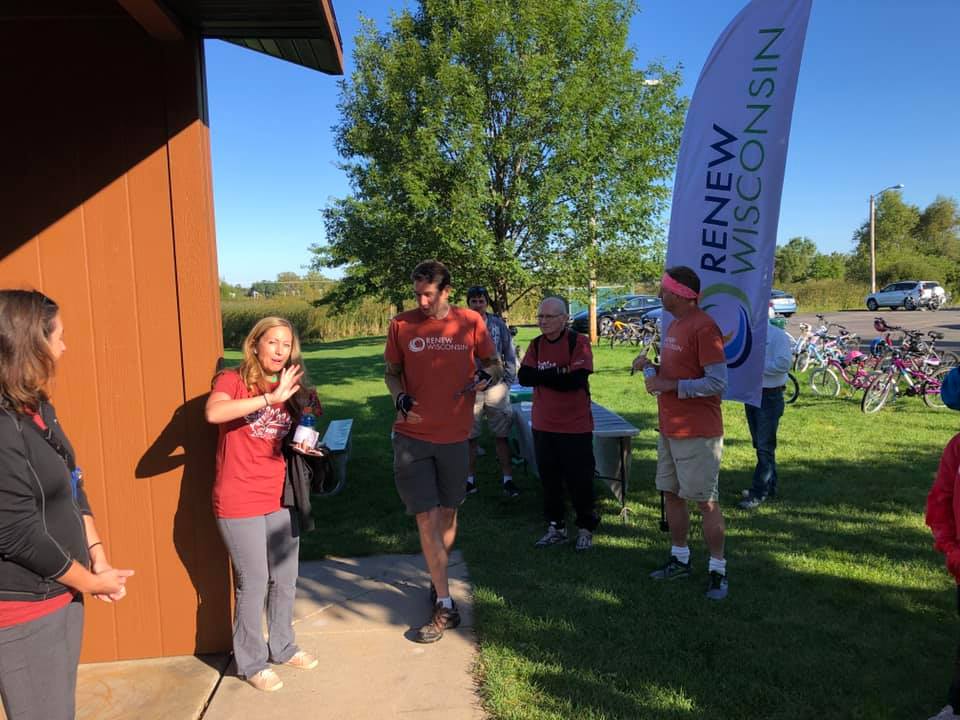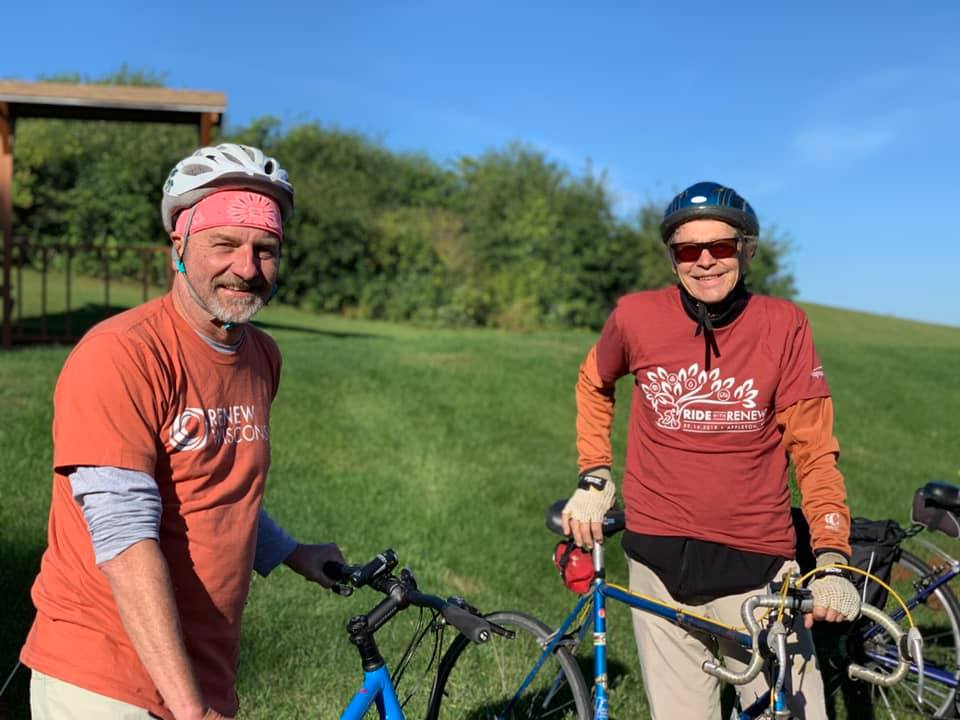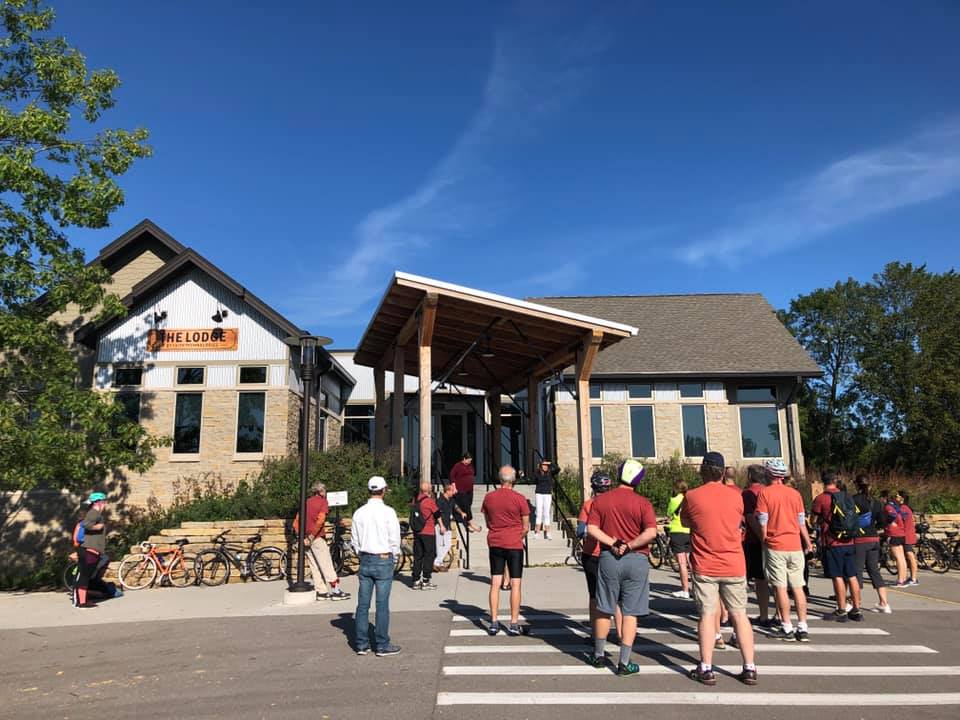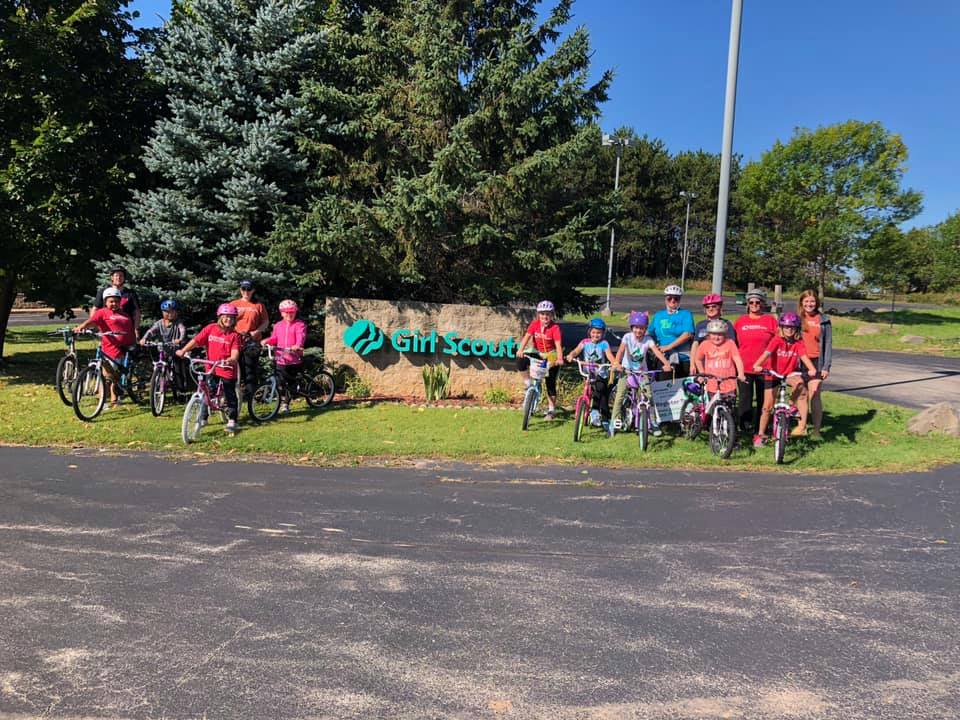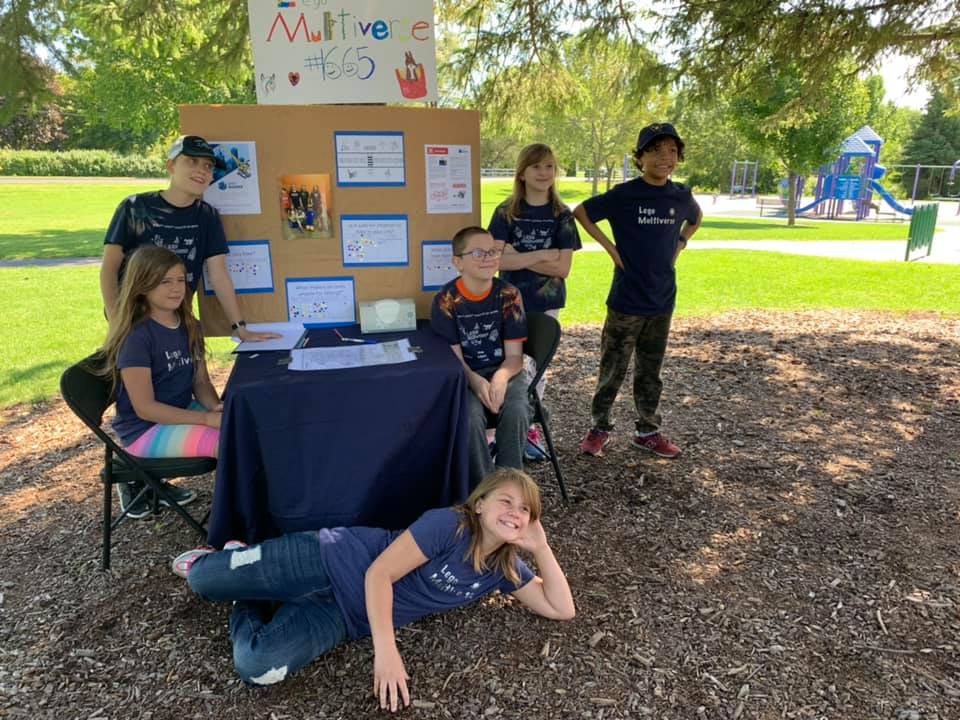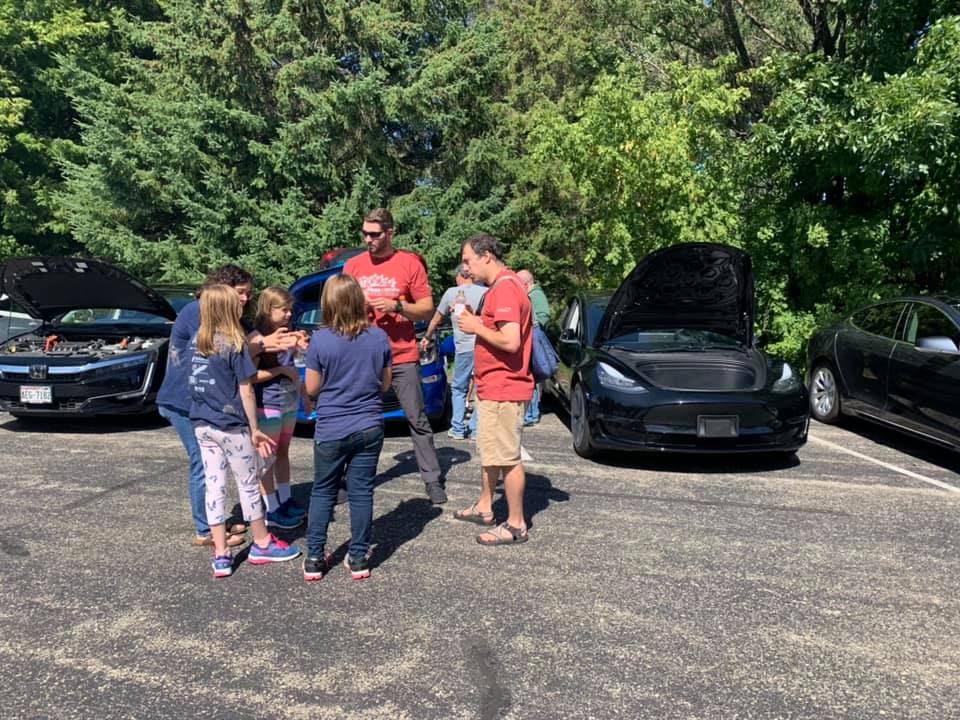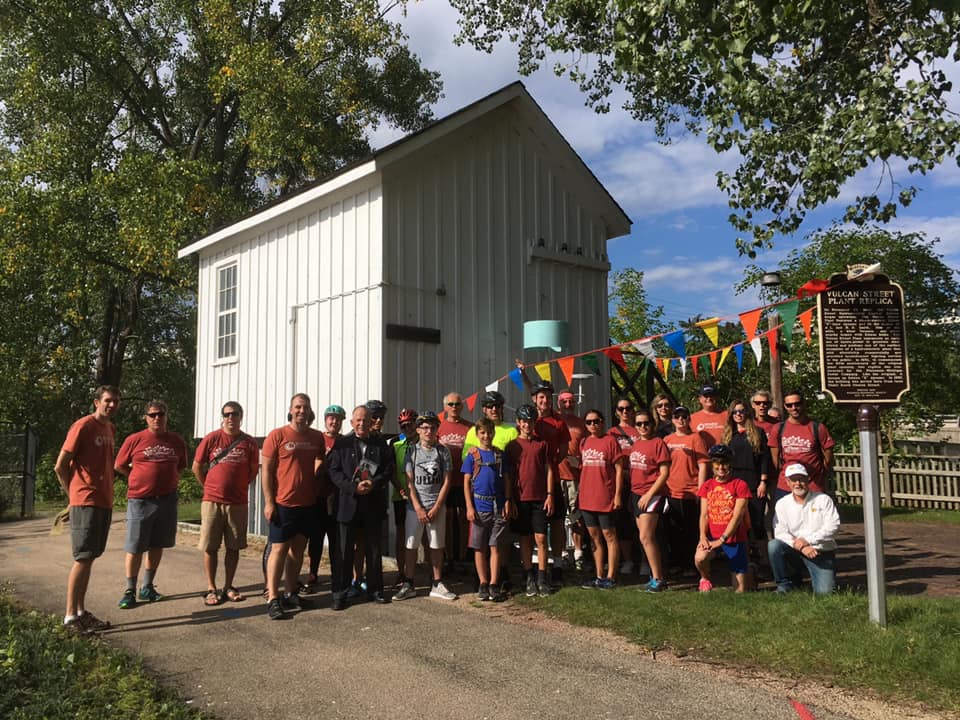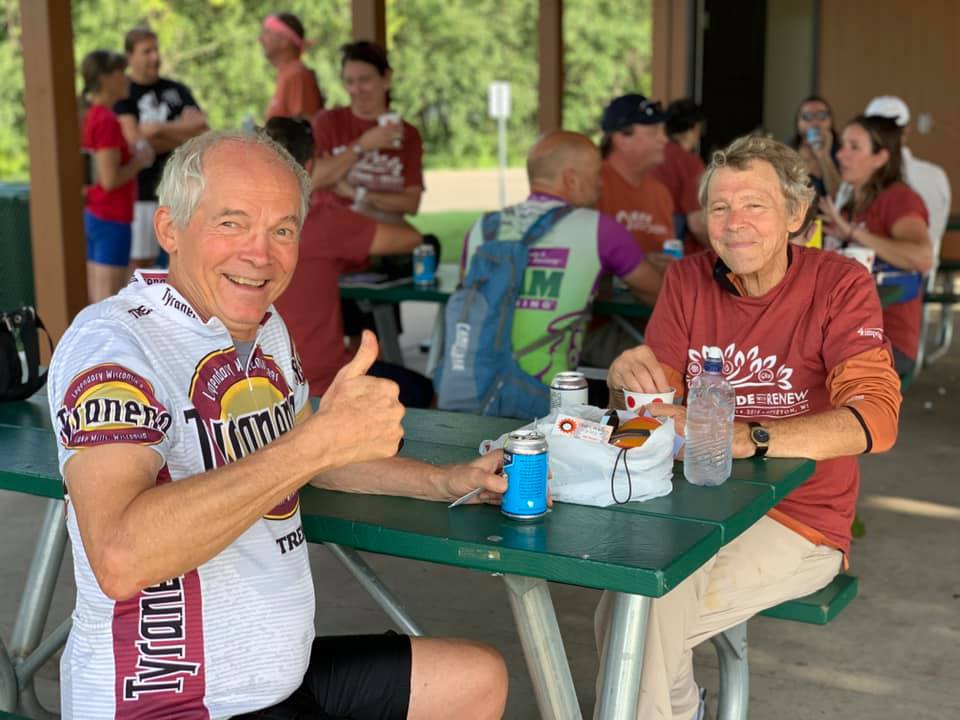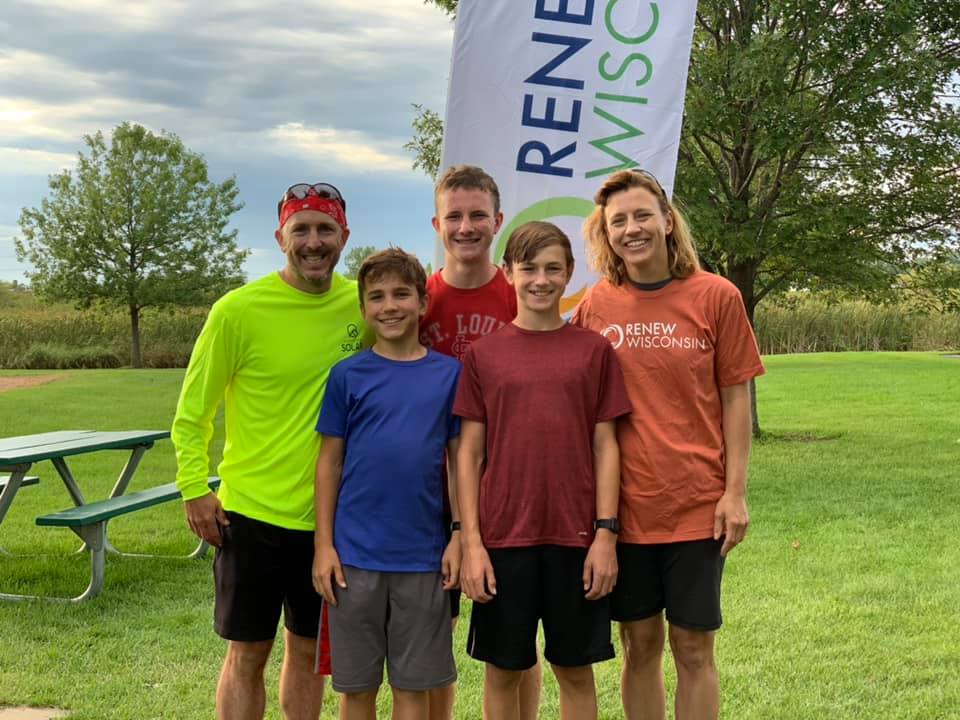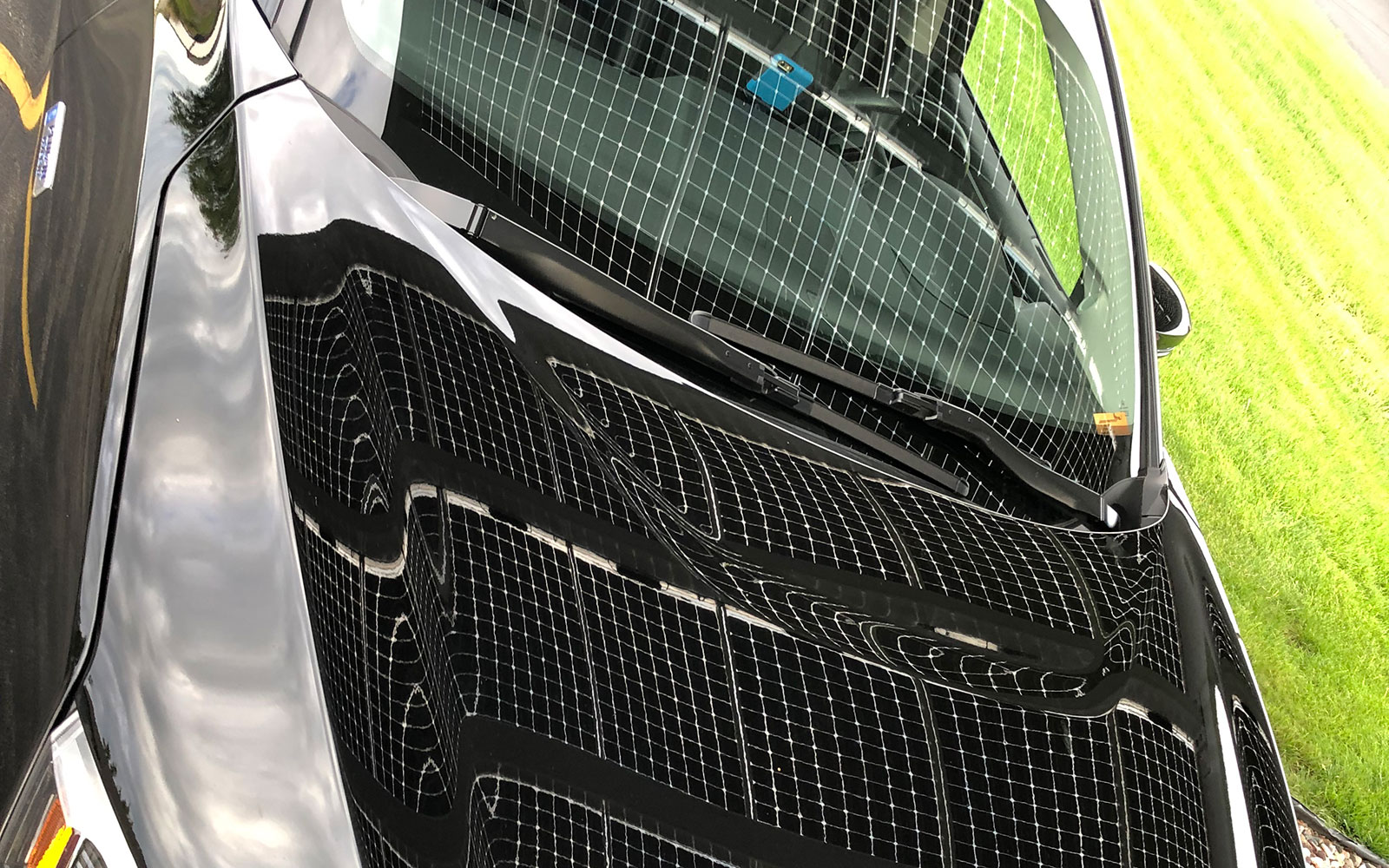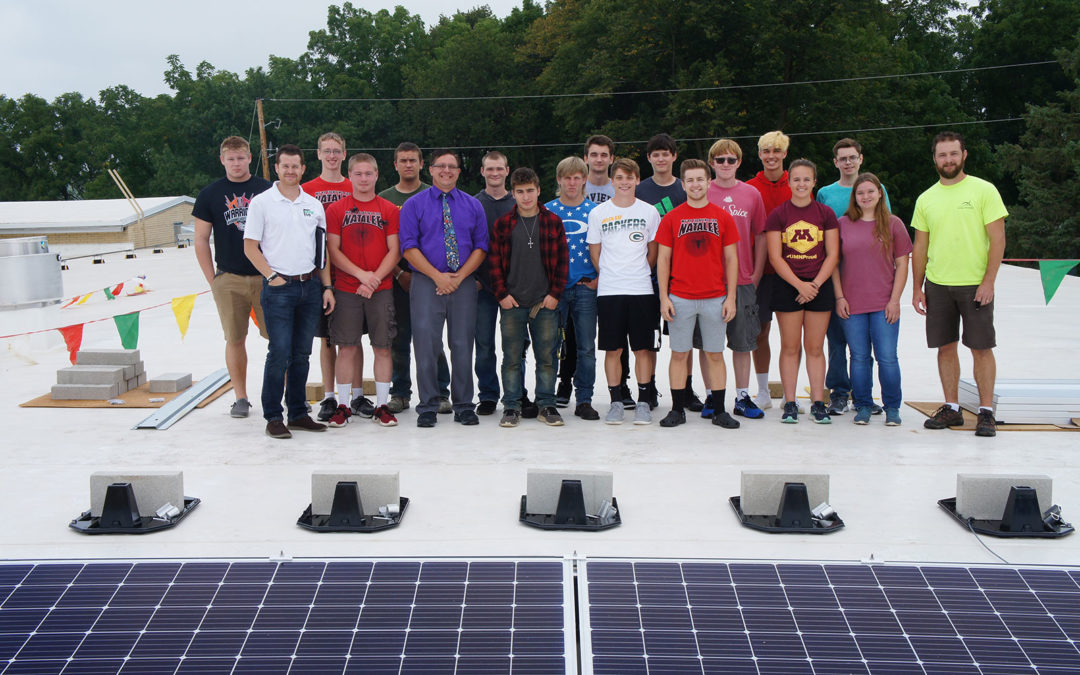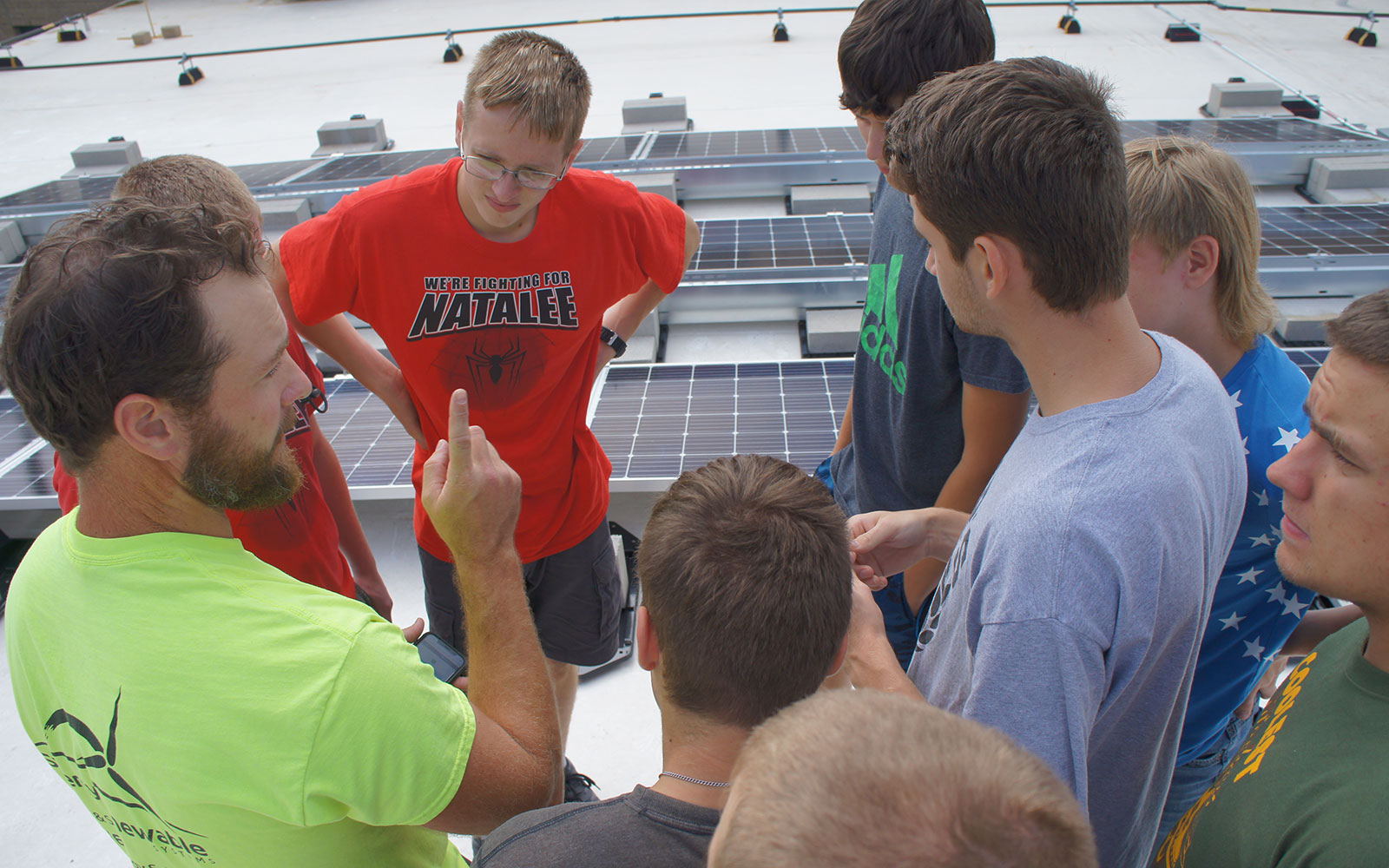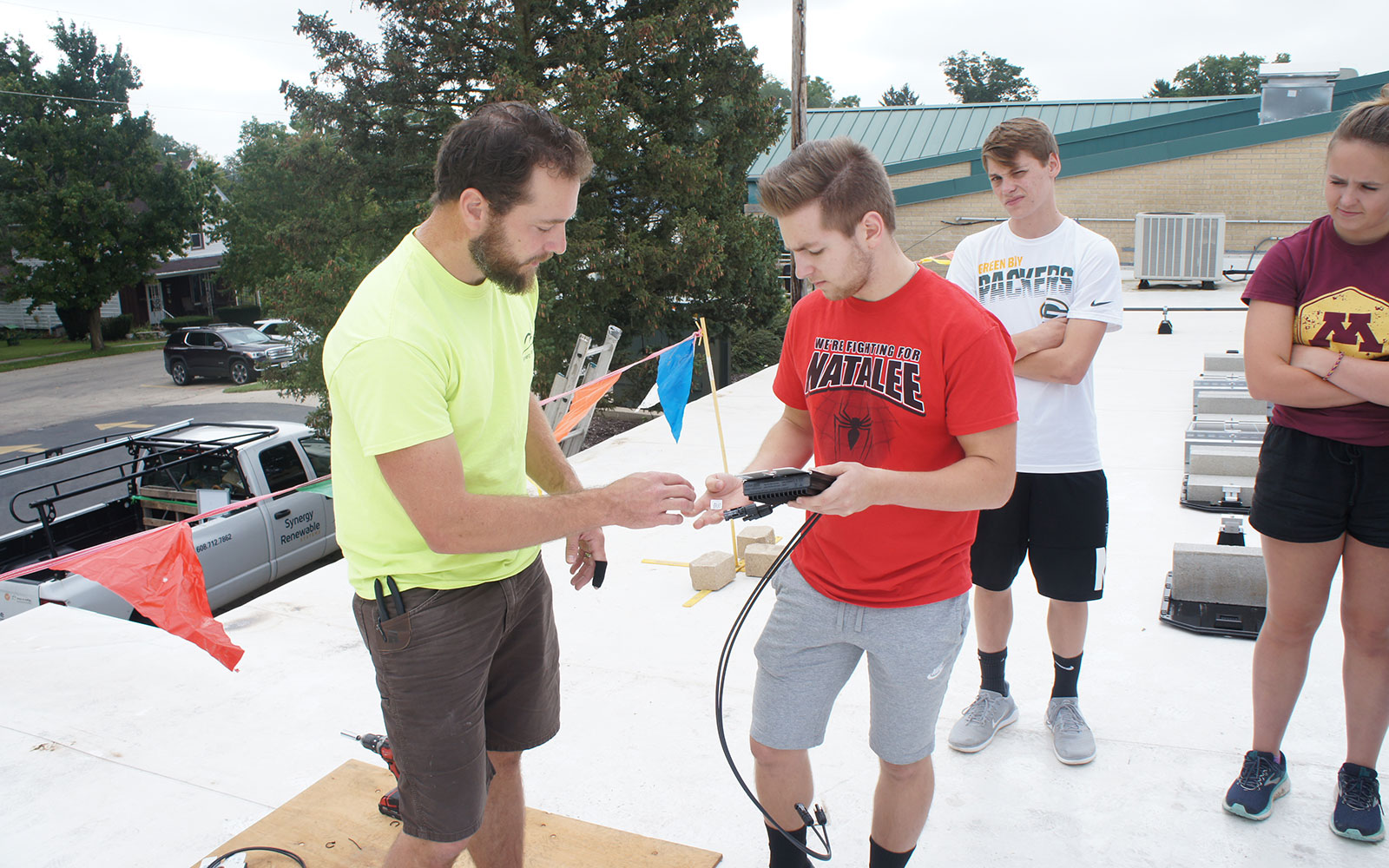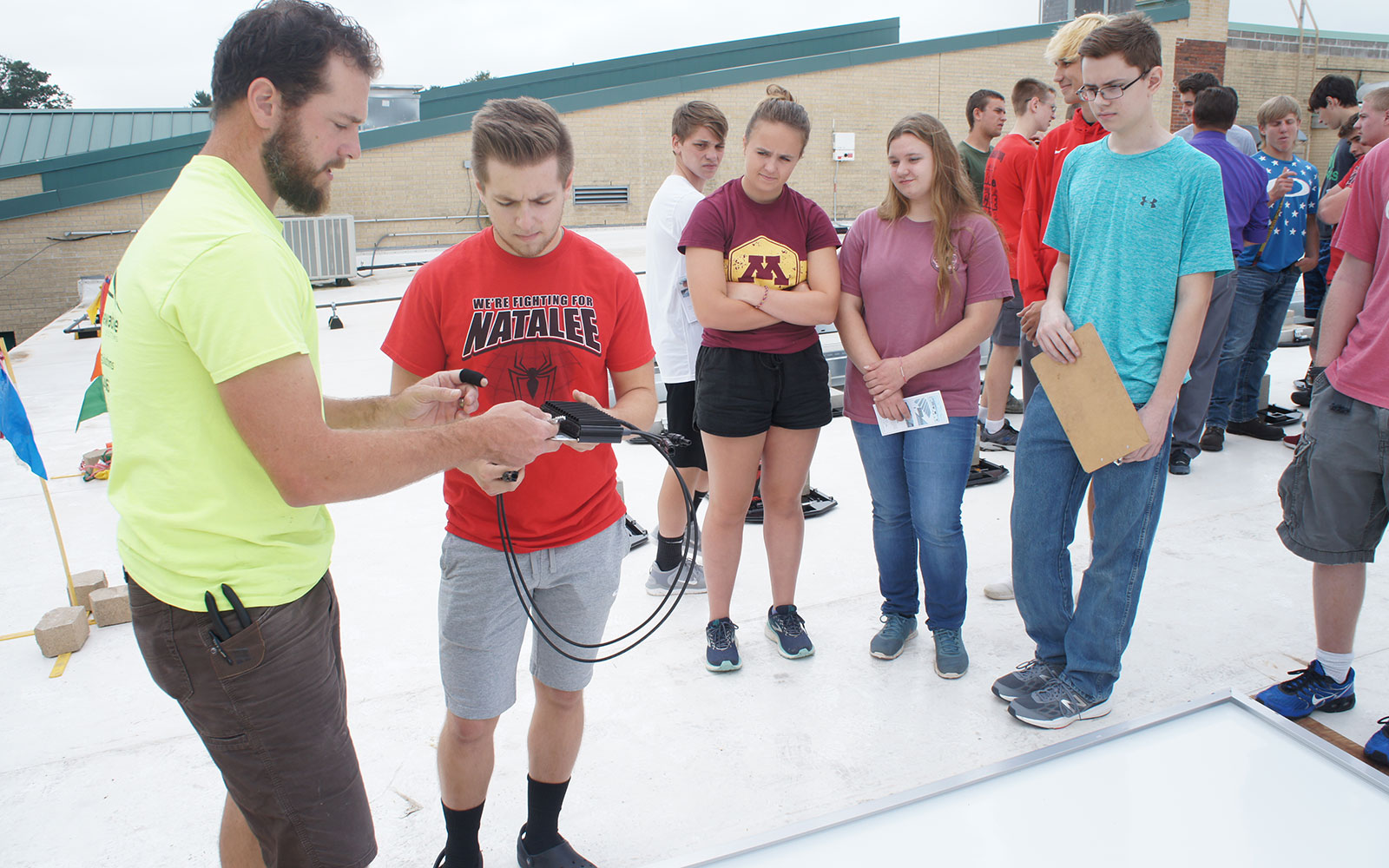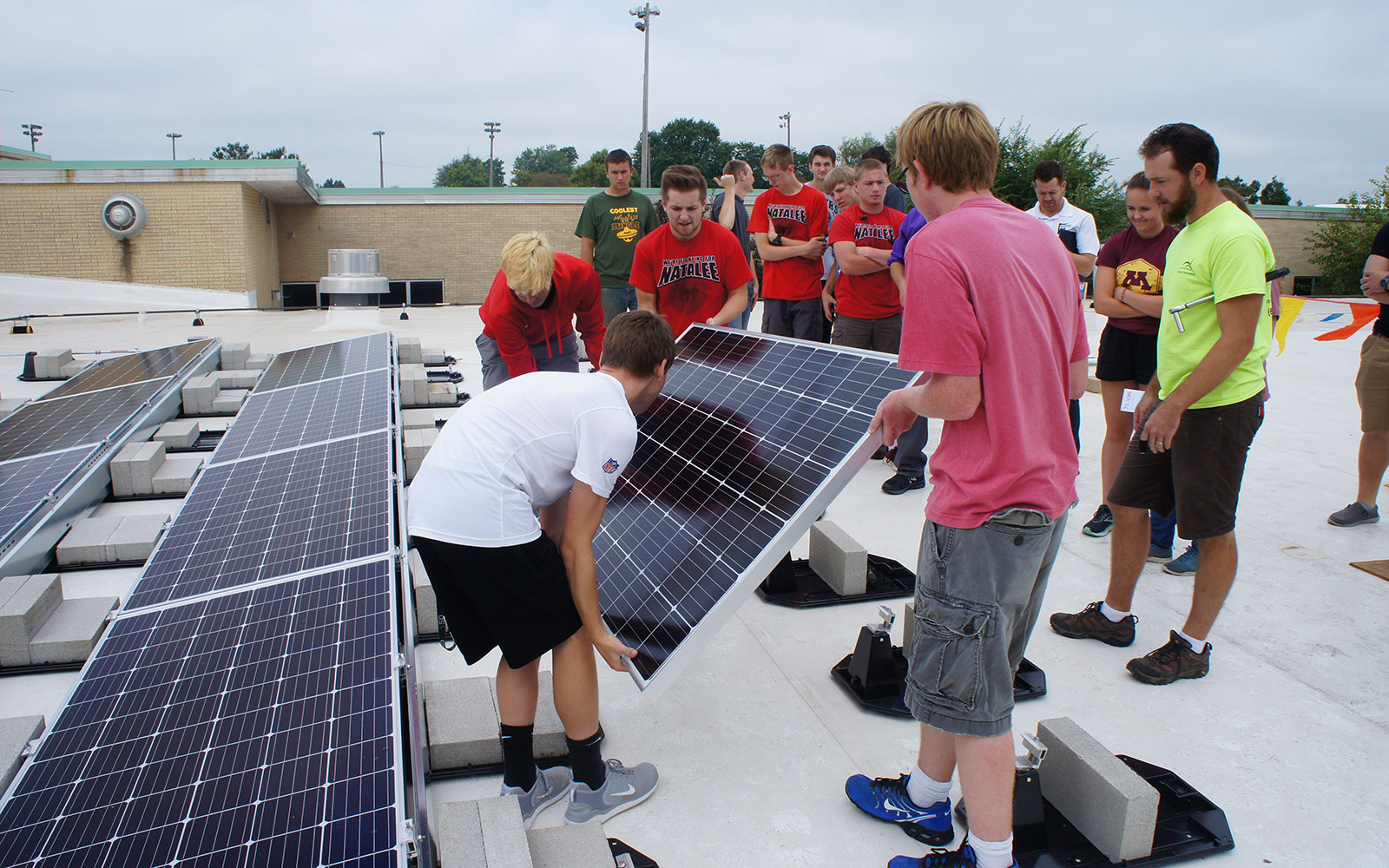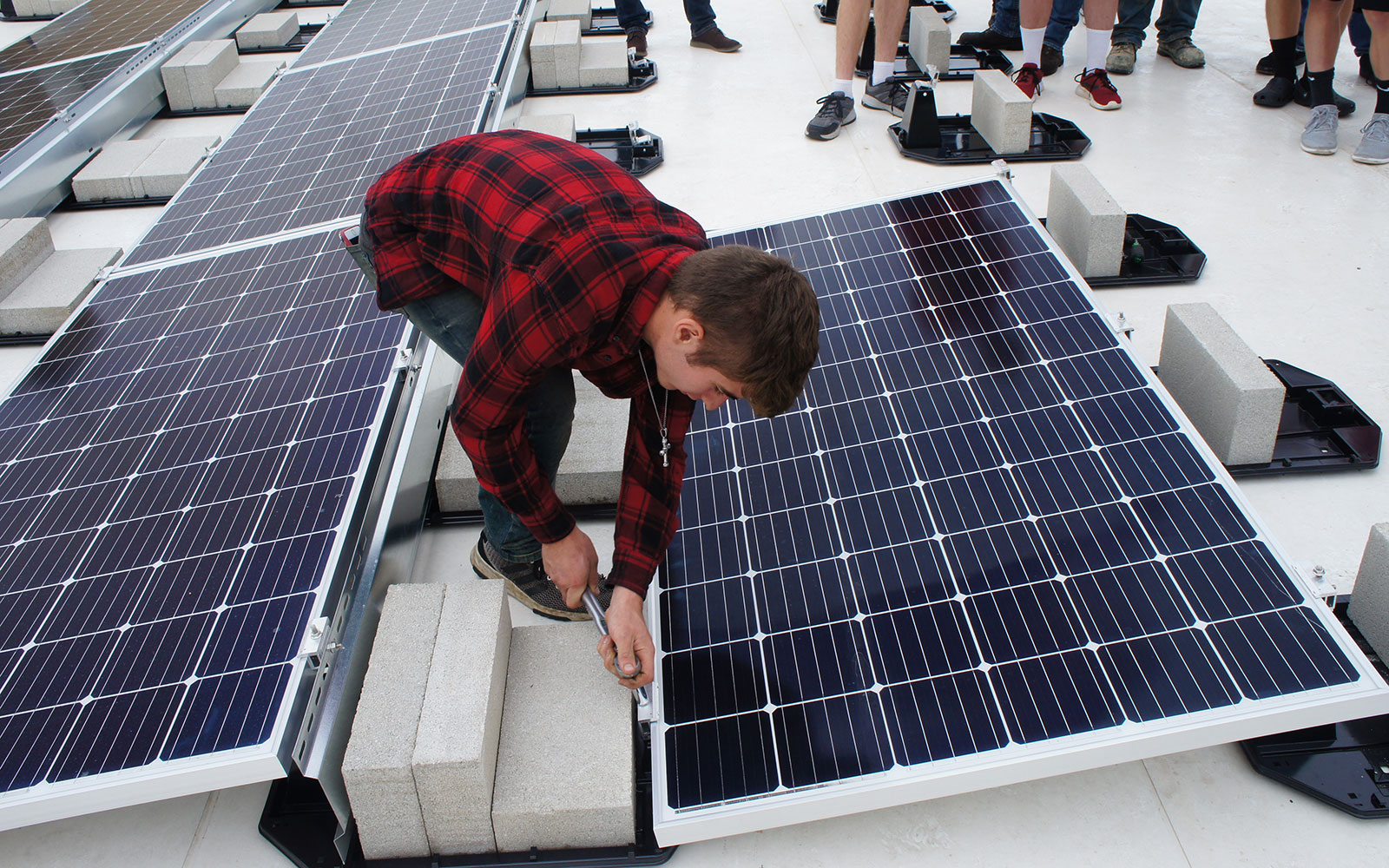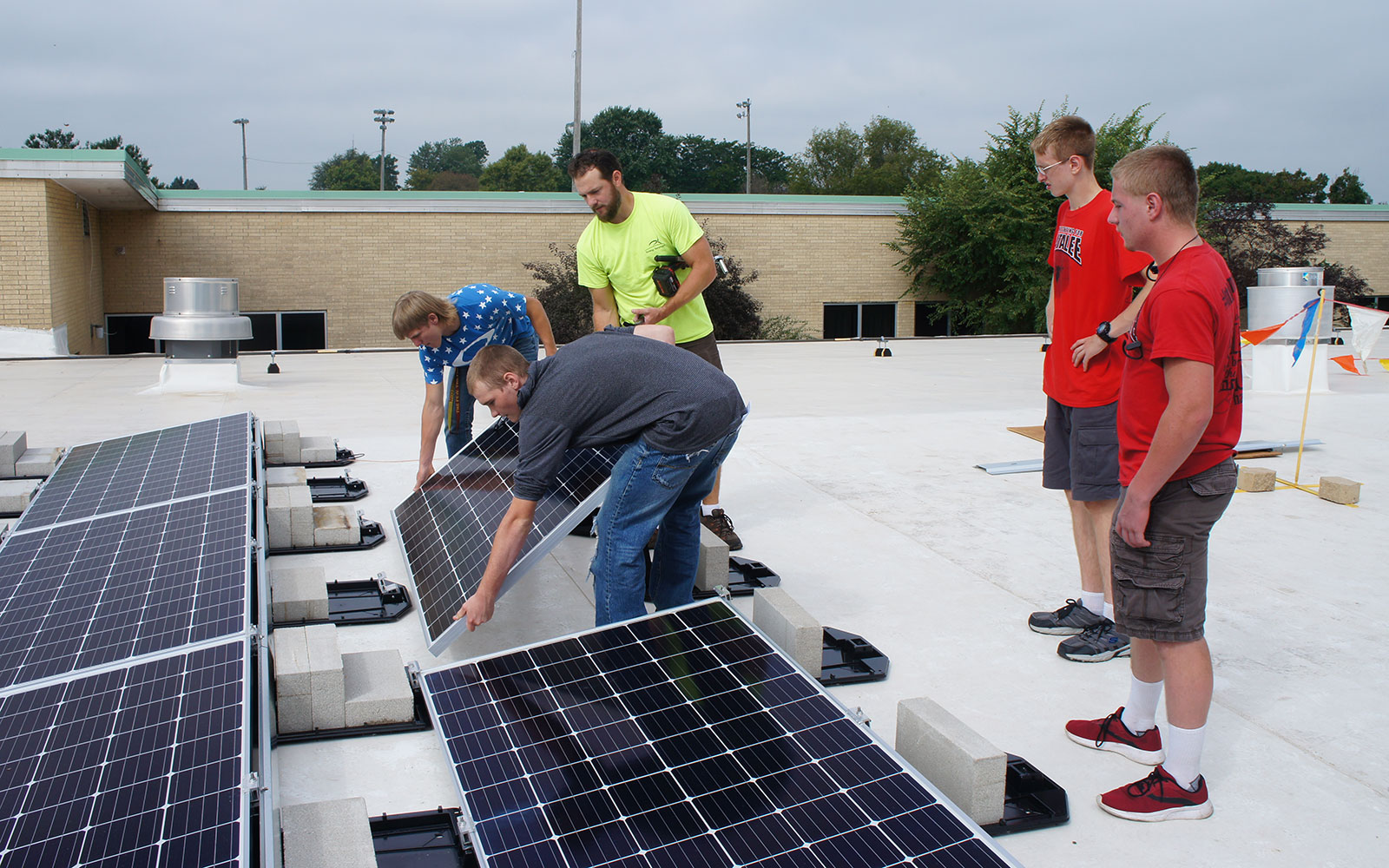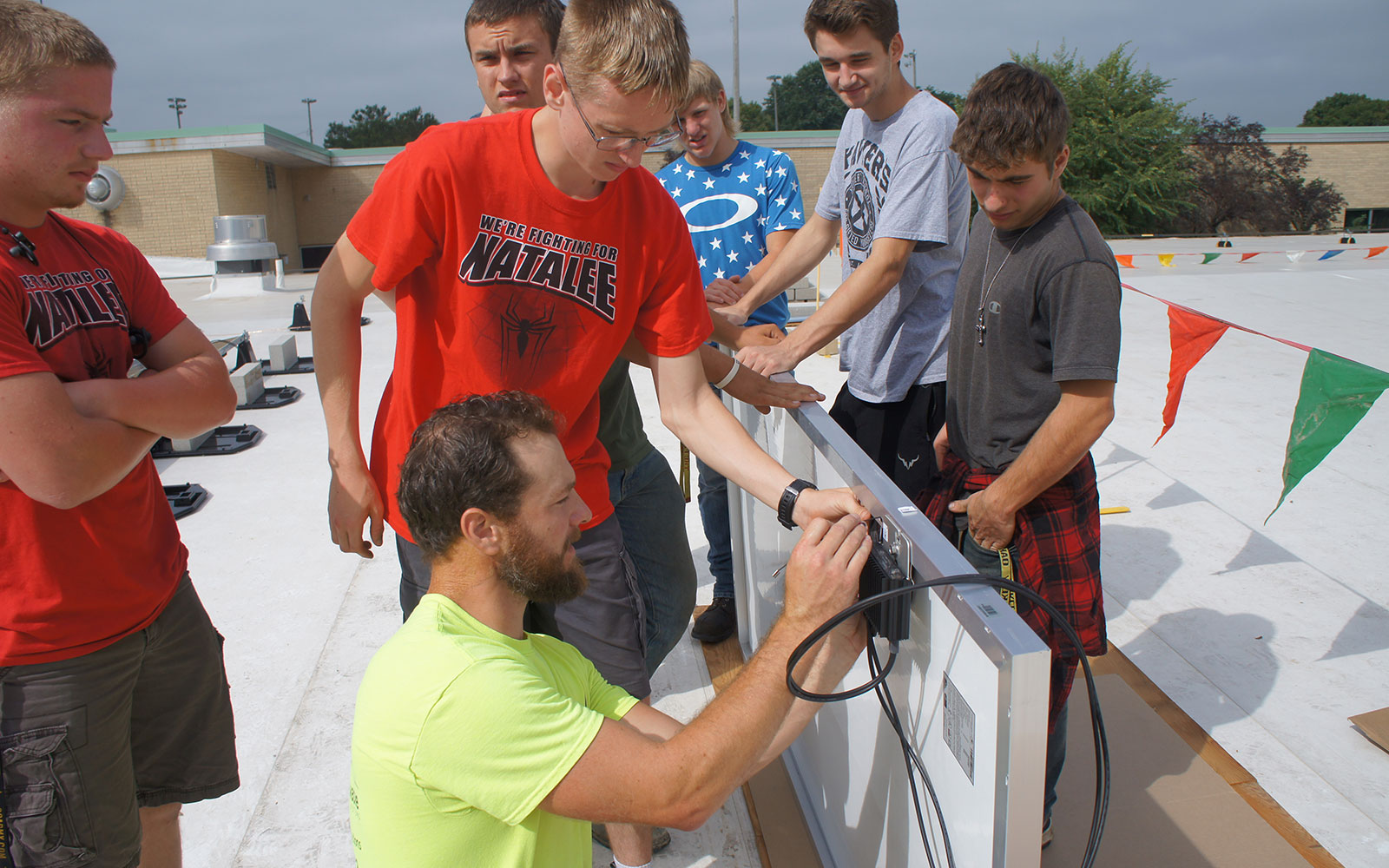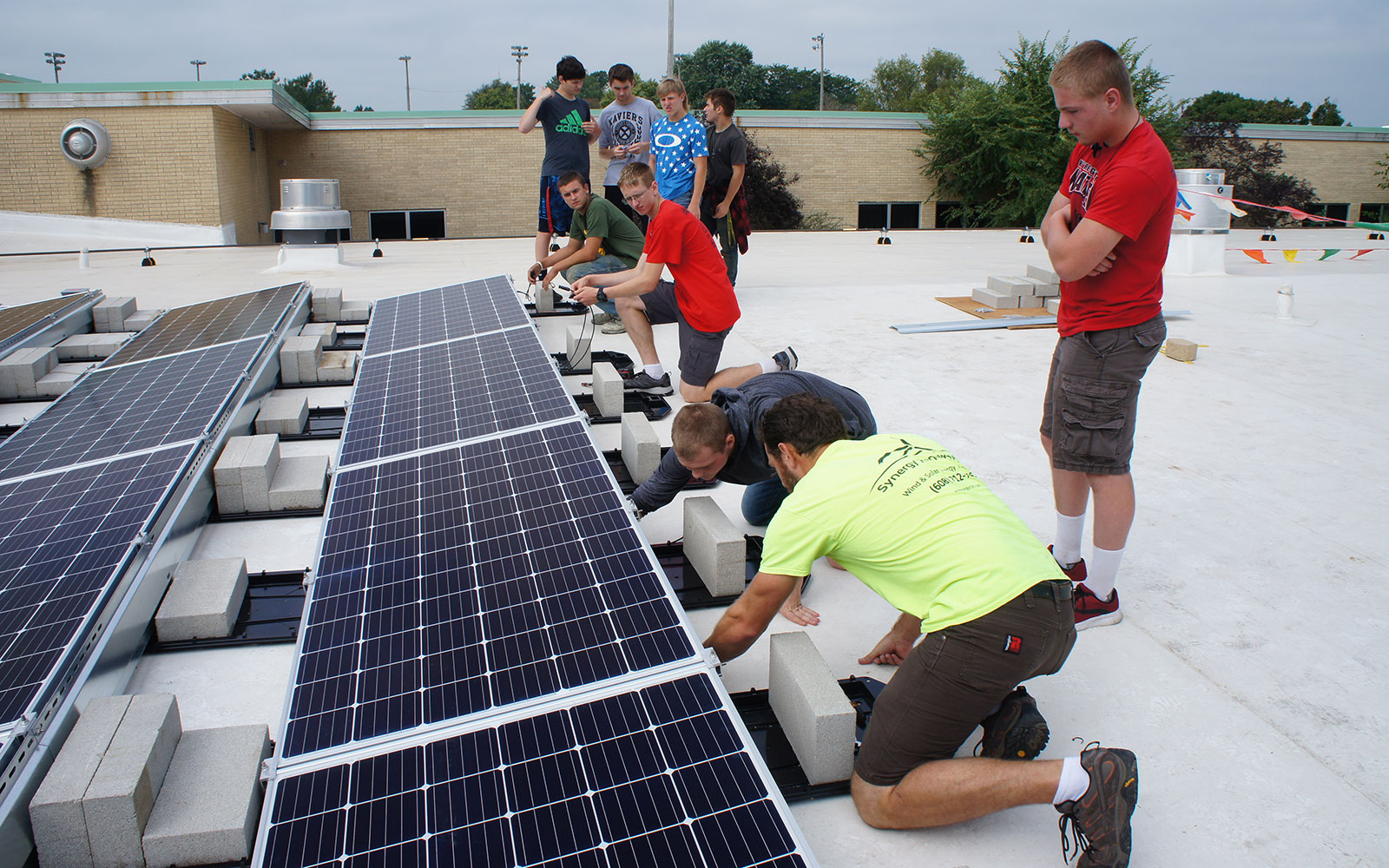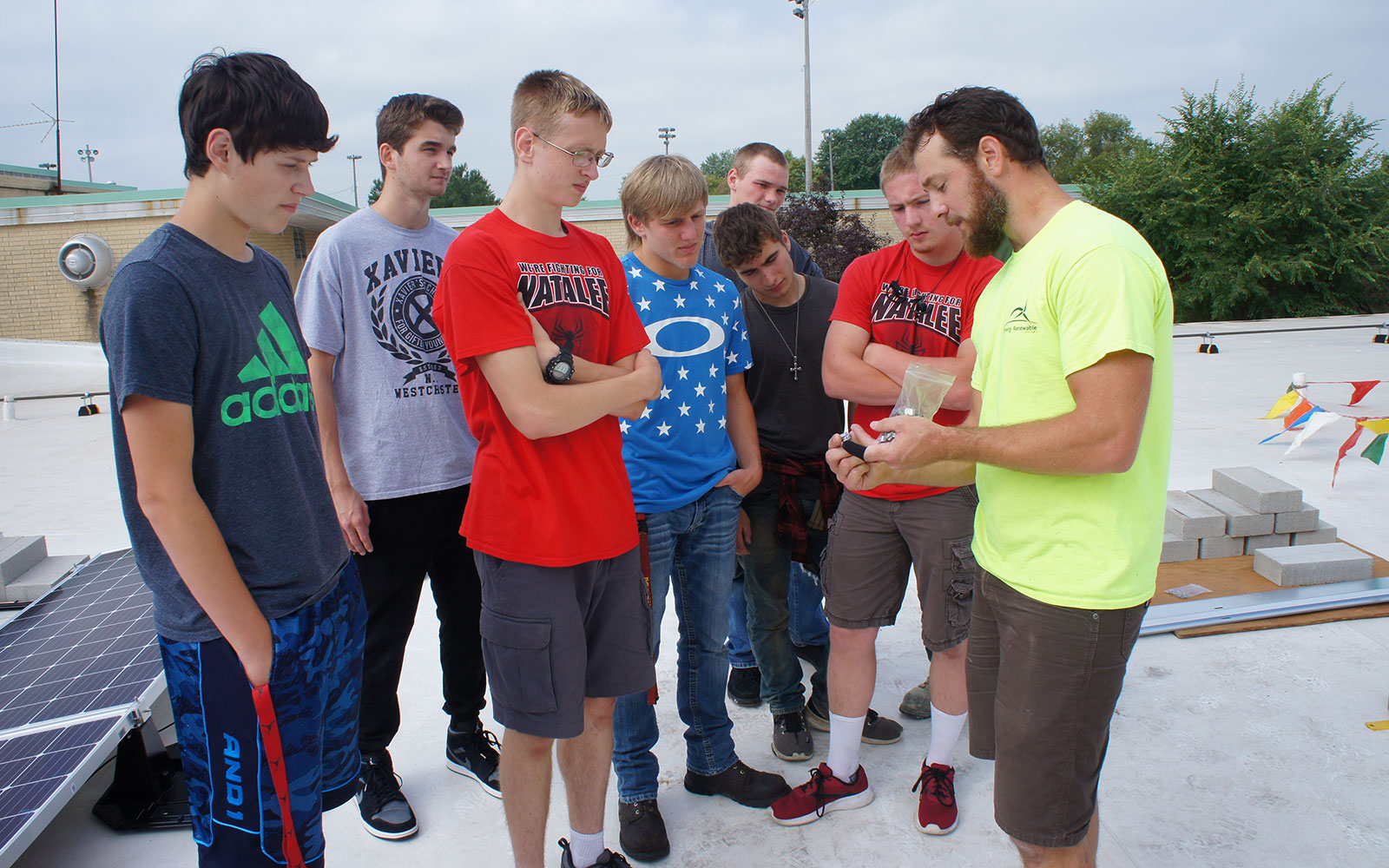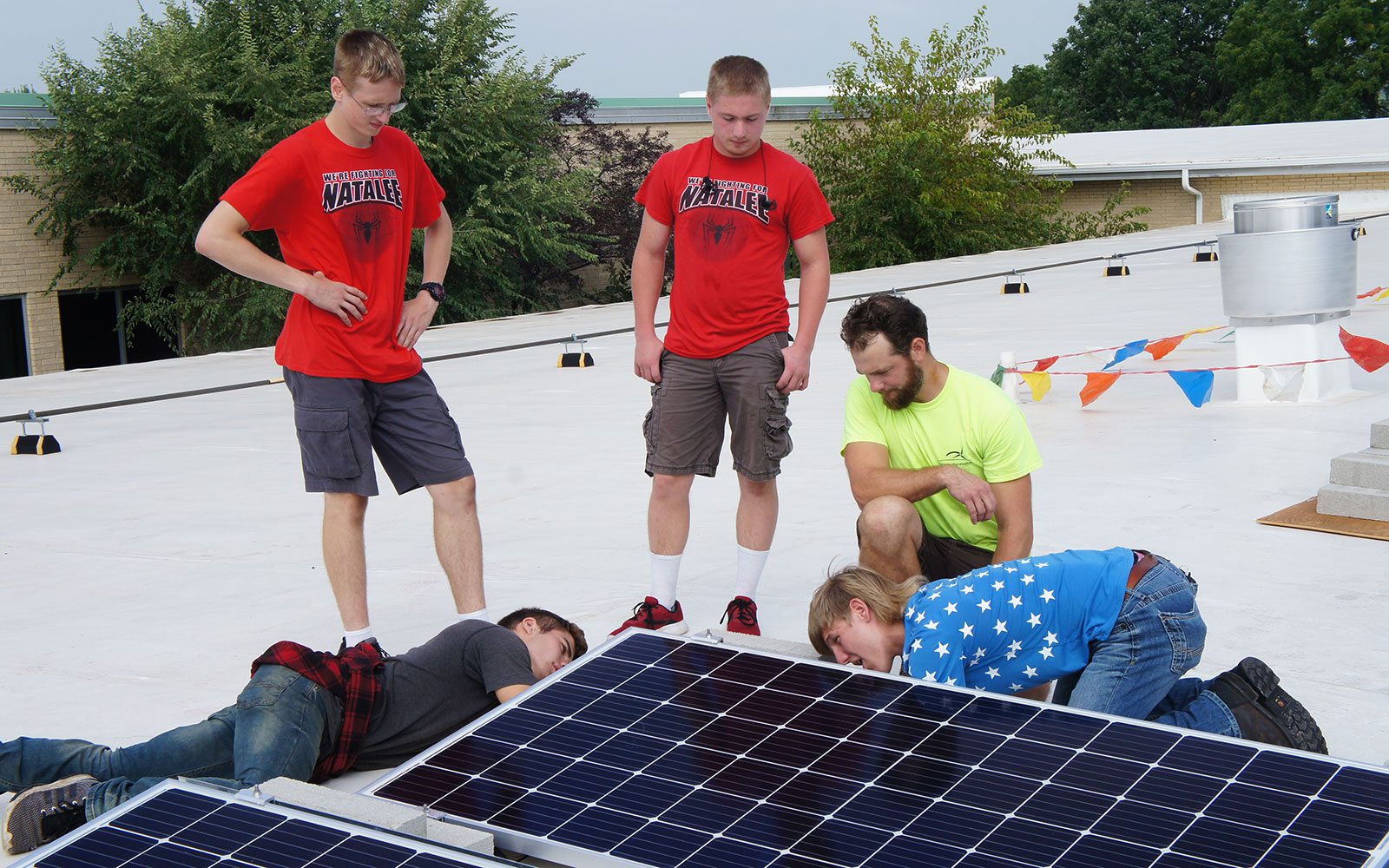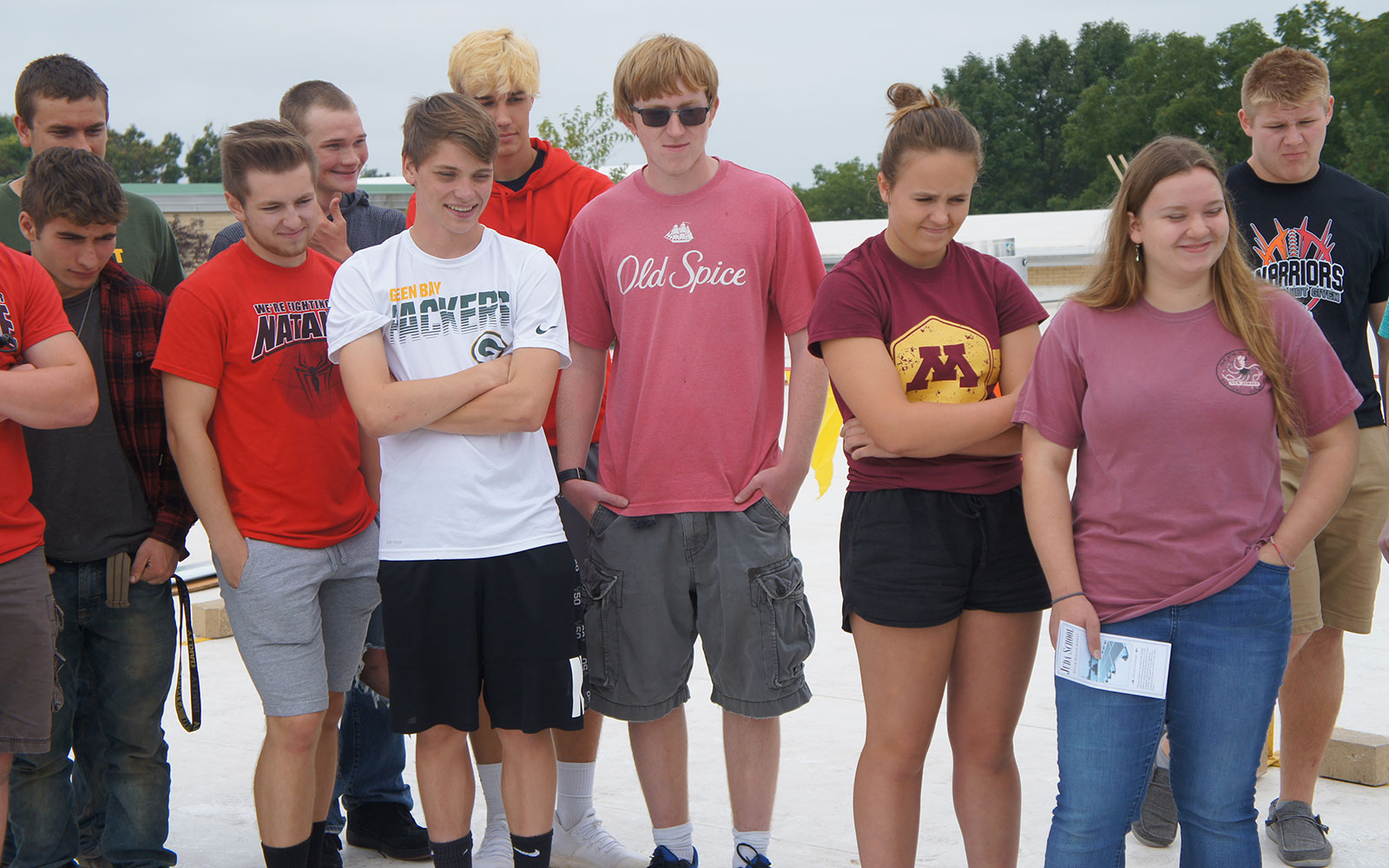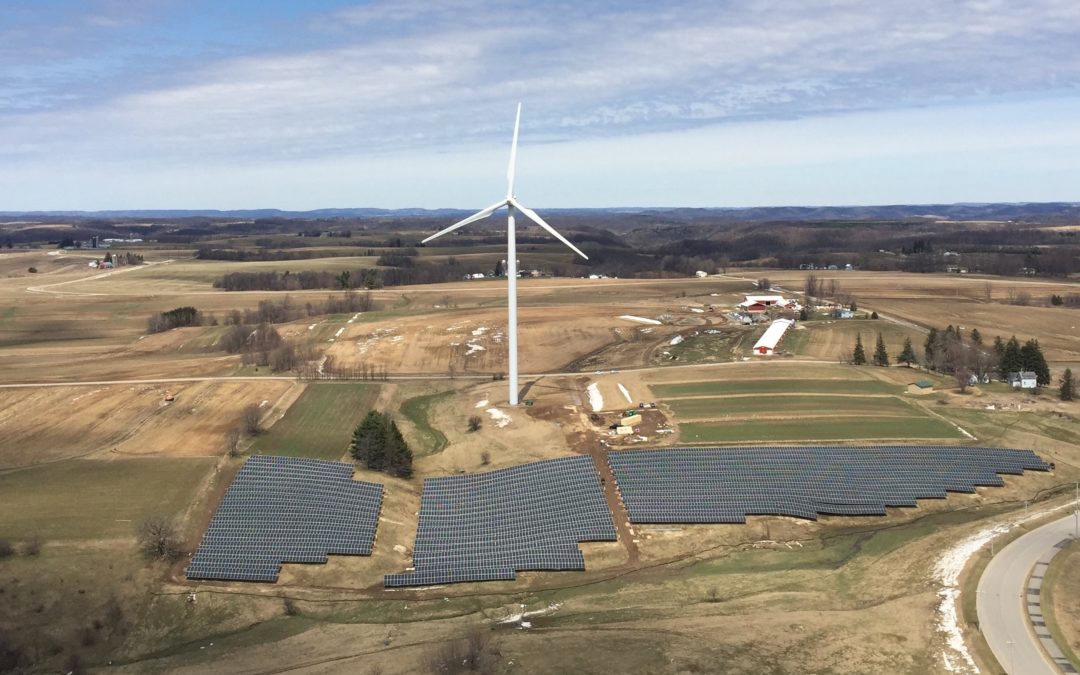
by Michael Vickerman | Jan 13, 2020 | Community, Events, RENEW Wisconsin, Renewables, Solar
At its ninth annual Renewable Energy Summit, set for Thursday January 16, 2020, RENEW Wisconsin will recognize individuals and organizations who have made significant and lasting advances in renewable energy development here in Wisconsin.
Titled “2020 Vision: The Path to 100% Clean Energy,” RENEW Wisconsin’s Summit will take place at Monona Terrace in Madison. Registration starts at 7:00 AM, with entry-level sessions on renewable energy and the electric grid at 7:30am. The main program runs from 8:30 AM to 3:30 PM. The recognition ceremony will begin at 12:45 PM. (Link to Renewable Energy Summit)
At this year’s Summit, RENEW will present five awards to renewable energy champions, developers and businesses for their leadership and accomplishments in 2019. The awards have been grouped under four categories which are listed below. They are:
- RENEWABLE ENERGY PIONEERS OF THE YEAR
- Madison Gas and Electric
- City of Middleton
- Middleton-Cross Plains Area School District
- RENEWABLE ENERGY BUSINESS OF THE YEAR
- Carlson Electric, Hayward
- RENEWABLE ENERGY CATALYSTS OF THE YEAR
- Bjorn Thompson and Jon McCarthy, Attic Angels, Madison
- Sister Rose Jochmann, Sisters of St. Francis of the Holy Cross, Green Bay
- RENEWABLE ENERGY PROJECT OF THE YEAR
- Butter Solar
- OneEnergy Renewables (developer)
- BluEarth Renewables (owner/operator)
- 10 municipal electric utilities (power purchasers)
- Organic Valley (Renewable Energy Credit purchaser)
- City of Madison (Renewable Energy Credit purchaser)
RENEWABLE ENERGY PIONEERS OF THE YEAR
This voluntary initiative, which will result in 1.5 MWAC of new solar power, involves many “firsts.” In 2017, Madison Gas and Electric (MGE) became the first electric utility in Wisconsin to launch a voluntary service that supplies electricity generated from a new solar power plant to retail customers. In 2019, MGE received approval for its first two contracts sleeved through its Renewable Energy Rider service. Ground has now been broken on an array near Middleton’s airport that will supply solar power over a 30-year period to two pioneering MGE customers, Middleton-Cross Plains Area School District and the City of Middleton. When MGE’s array is energized later this year, these utility customers will become the first in Wisconsin to receive solar power under this novel structure.
RENEWABLE ENERGY BUSINESS OF THE YEAR
A family-owned business since 1977, Hayward-based Carlson Electric has emerged as a leading solar energy contractor serving much of northern Wisconsin. In recent years, Carlson Electric has demonstrated considerable skill in financing and designing solar systems for nonprofit groups and civic entities. Indeed, Carlson’s ability to access funds through the Solar for Good program, PACE financing, and Wisconsin Energy Innovation grants was a critical factor in helping such customers as Solon Springs School District, Spooner Ice Arena, Burnett County Humane Society, and Northland Lutheran High School invest in solar power in 2019. Carlson is well on its way to completing the state’s most expansive solar initiative aimed at low- and moderate-income households. By this time next year, Carlson will have financed and installed 269 kilowatts of rooftop solar capacity directly serving 108 apartment dwellers in Sawyer County.
RENEWABLE ENERGY CATALYSTS OF THE YEAR
(1) In 2014, the Sisters of St. Francis of the Holy Cross, located in Green Bay, commissioned the installation of a 112-kW ground-mounted solar array to power the premises and serve as an outdoor classroom on clean energy. Working with the same local contractor (Eland Electric), the Sisters of St. Francis added a 98 kW array next to the existing one in 2019. The result is an inspiring and artfully arranged landscape that combines the ethic of planetary stewardship with the beauty of solar power. The leadership and guidance provided by Sister Rose Jochmann, chair of the community’s sustainability committee, was critical to the ultimate success of this initiative. In her own words: “In 2014, we had hoped to generate half of our electricity from solar but could afford only one-third. Our commitment to sustainability and care of the earth compelled us to look at our options again in 2018.”
(2) Located in Madison’s west side, Attic Angel Community is a senior living campus whose residents include many talented and dedicated volunteers. Last year, Attic Angels contracted with Pewaukee-based SunVest Solar to install PV panels on two apartment wings, totaling 98 kW. That first taste of solar power opened the door to a larger effort initiated by two volunteers living in the Attic Angels Prairie Point community, Bjorn Thompson and Jon McCarthy. Thompson and McCarthy have served on the community’s sustainability committee. Working with SunVest, they designed an offering—effectively a solar group buy—which they presented to their Prairie Point neighbors in hopes that they would take part. Of the 123 households living in Prairie Point, 40 signed up to host solar panels on their roofs, resulting in a total of 133 kW. With that initiative, combined with a 135 kW array installed in 2019 on the roof of Attic Angels’ memory care unit, the campus now hosts 366 kW of rooftop solar capacity, the largest serving a senior housing community in Wisconsin.
RENEWABLE ENERGY PROJECT OF THE YEAR
Butter Solar consists of 10 PV arrays in three states totaling 22.9 MWAC, including seven scattered across western Wisconsin with a total capacity of 17 MWAC. Taken together, the seven arrays constituted the largest addition to Wisconsin’ electric generating fleet in 2019.
From a contractual perspective, Butter Solar may be the most creative solar project in the country. Owned and operated by BluEarth Renewables, Butter Solar’s Wisconsin portfolio supplies low-cost power to the municipal utilities serving Arcadia, Argyle, Cashton, Cumberland, Elroy, Fennimore, and New Lisbon. The villages of La Farge, Viola, and Merrillan are also Butter Solar participants. The same project also generates Renewable Energy Credits for Organic Valley and the City of Madison, helping them meet their ambitious renewable energy goals.
Seattle-based developer OneEnergy Renewables, through their local Madison office, created the complex financing structure that allowed these entities to pool their resources into the project and receive value from it in return. OneEnergy also designed the arrays to blend in with the rural landscape while promoting wildlife and pollinator species. Wisconsin contractors such as Arch Electric contributed by providing expertise and high-quality workmanship.
This year’s summit program will also draw attention to other milestones and notable achievements in 2019, including the following:
- The Public Service Commission approved three large projects that will add 550 MW of solar power in the state by 2021, effectively quadrupling current levels.
- Grant County approved a 21- to 24-turbine wind project proposed by Minnesota-based Project Resources Corporation. Red Barn is the first project to be granted a permit by a local government under Wisconsin’s wind siting rule (PSC 128).
- At its Yahara landfill, Dane County completed the first project in the nation capable of receiving biogas from multiple off-site locations and injecting the cleaned-up methane into a pipeline network that serves CNG gas stations locally and across the nation.
- RENEW and Wisconsin Clean Cities team up to co-host “The Future of Transportation Day” at the State Capitol. The event engages visitors to see how vehicle technology is shaping the transportation landscape, and provided opportunities for test-driving the electric, hybrid and alternative fuel vehicles displayed outside.
- OneEnergy and Arch Electric designed and built a 1 MW array in Ashland, the third shared solar project for Xcel Energy’s Renewable*Connect program.
- Seven residential group solar purchase programs across Wisconsin accounted for 310 installations totaling 1,983 kW of new solar capacity. Both numbers represent all-time highs.
- Central Storage & Warehouse and SunPeak teamed up to install a 654 kW rooftop PV system on a third CS&W property, this one in Caledonia. With more than 2 MW powering its operations, CS&W is the second largest solar host in Wisconsin.
- Adding 230 kW of PV generation atop its parking canopies, Appleton International Airport (ATW) now has more than 500 kW of solar powering its operations, the most at any Wisconsin airport.
- RENEW’s Solar for Good program provides grants that, in 2019, leveraged the installation of more than one megawatt of solar capacity serving 27 nonprofit-owned sites across the state.
Click here for more information on the 2020 Summit program agenda, speakers, and registration.
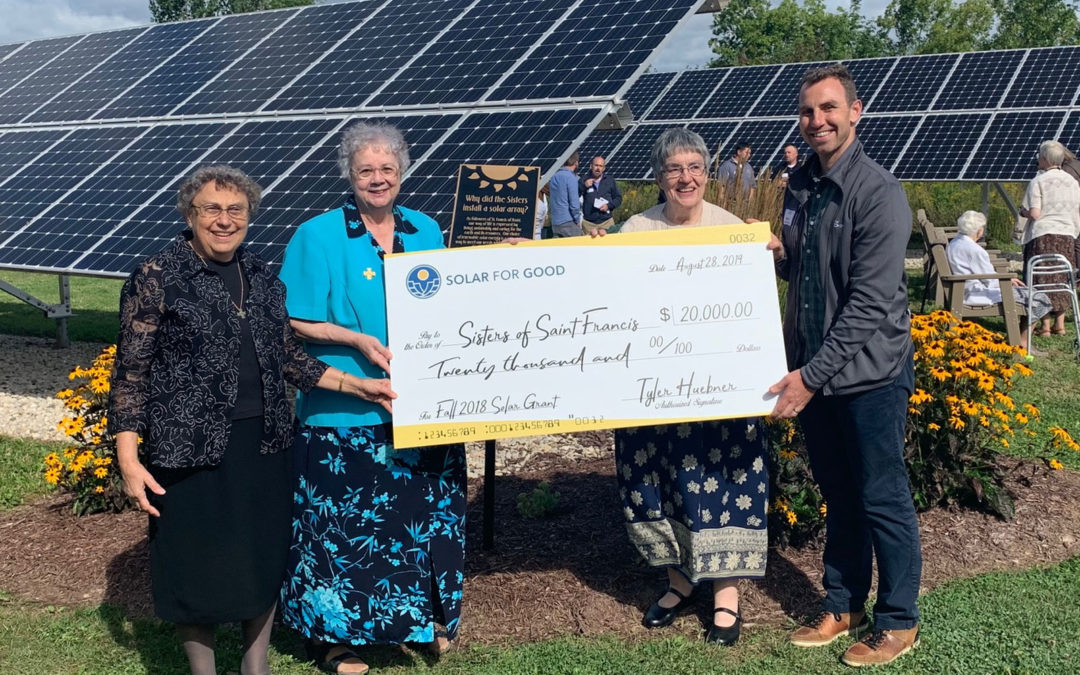
by Sam Dunaiski | Dec 16, 2019 | Community, Local Initiatives, Programs, RENEW Wisconsin, Solar, Solar for Good
RENEW Wisconsin’s Solar for Good program will issue nearly $140,000 worth of solar panels to Wisconsin nonprofits as part of their fall 2019 funding cycle. These grants will go to 13 organizations across the state that together will install nearly 600 kilowatts of clean, renewable electricity. When completed, these solar projects will lead to over $1.2 million of solar investment in Wisconsin.
The following organizations have been offered Solar for Good grants to install new solar electric systems:
CAP Services, poverty alleviation, Stevens Point
Camp Amnicon, outdoor retreat and spiritual worship, South Range
Menīkānaehkem, Native American educational organization, Gresham
Habitat for Humanity – La Crosse Area, affordable housing provider, La Crosse
Jackson County Animal Shelter, safe haven for stray animals, Black River Falls
Heartland Housing, affordable housing provider, Madison
First Unitarian Society of Milwaukee, house of worship, Milwaukee
Boys & Girls Club of Greater La Crosse, youth education, La Crosse
Bethel Lutheran Church, house of worship, Madison
Movin’ Out, alternative housing provider, Madison
Zwingli United Church of Christ, house of worship, Verona
Kathy’s House, alternative housing provider, Wauwatosa
One organization has asked to remain anonymous at this time.
This round of Solar for Good funding features a diverse group of awardees from across Wisconsin. The Boys and Girls Club of Greater La Crosse will use their solar installation to help educate members on renewable electricity and energy efficiency for their recently-renovated facility. Over 200 solar panels will be installed at Kathy’s House, a hospital guest-house in Wauwatosa. And the Indigenous-led organization Menīkānaehkem, will install solar to power several tiny homes being constructed on the Menominee Indian Reservation to house the community’s homeless population.
“We decided to go solar to reduce our energy bills and to focus more of our resources on programming,” said Guy Reiter of Menīkānaehkem. “We plan to use the array as a training center for community members interested in pursuing a career in solar. Thanks to the Solar for Good grant, we are moving closer to our goal of making the Menominee community energy-sovereign as a way to create jobs, restore hope, reduce carbon pollution, and mitigate climate change.”
This marks Solar for Good’s 5th funding cycle and the second-largest to date. Including the fall 2019 funding cycle, the program’s impact will total 74 Wisconsin nonprofits installing 88 new solar arrays throughout the state. The program will add 3.25 megawatts of clean, renewable power to Wisconsin’s electric mix, enough to power approximately 650 homes. In total, these 88 solar arrays will spur over $7 million in investments in renewable electricity.
About Solar for Good
RENEW Wisconsin’s Solar for Good initiative fosters the expansion of solar power among mission-based nonprofits and houses of worship in Wisconsin. Through a generous partnership with Couillard Solar Foundation, RENEW Wisconsin awards solar panels to nonprofit organizations, helping them switch to clean, renewable, solar energy.
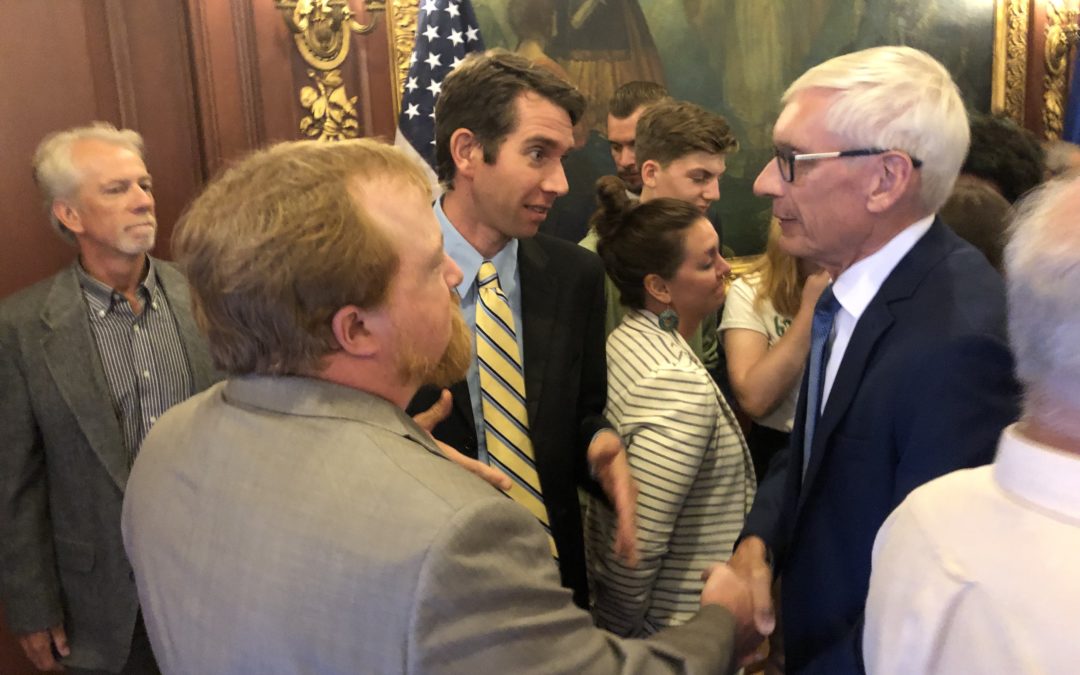
by Michael Vickerman | Sep 23, 2019 | Advocacy, Biogas, Community, Jobs, Public Service Commission, RENEW Wisconsin, Renewables, Solar, Solar for Good, Utilities, Wind
Last month, Governor Tony Evers delivered an ambitious clean energy vision for Wisconsin, which the editors of the Wisconsin State Journal aptly summarized: “Goal: Carbon-free by 2050.”
Executive Order #38 creates the state’s Office of Sustainability and Clean Energy, and directs the new office to “achieve a goal of ensuring all electricity consumed within the State of Wisconsin is 100 percent carbon-free by 2050.” This office will take the lead in planning and coordinating the Evers Administration’s efforts to greatly increase its own reliance on carbon-free electricity, and develop strategies for expanding clean energy throughout the state. The administration envisions accomplishing these goals through a partnership with other state agencies and state electric utilities.
To demonstrate that this initiative will very much be a team effort, Governor Evers was joined by Lt. Gov. Mandela Barnes, Public Service Commission Chairperson Becky Cameron Valcq and Department of Natural Resources Secretary-designee Preston Cole.
With this order, clean energy becomes again a policy priority, advanced to not only bolster the state’s economy and protect its natural resources, but also promote the health and well-being of its citizenry. What’s also notable about Evers’ initiative is the degree to which it is grounded in climate science. The order frames climate change as an escalating environmental problem that is already doing harm to the state on several fronts. An effective response from state government, therefore, demands aggressive and sustained action. Moving to carbon-free electricity by 2050 certainly qualifies on that score.
Now, an executive order is not the same thing as a law. Executive orders carry no legal weight, which explains why they are narrowly drawn to address matters that are totally within a governor’s control, such as agency priorities. Moreover, they are not binding on future governors and their administrations. That said, we are hopeful that the clean energy actions taken today by this Administration will cultivate, over time, buy-in from state legislators, and that from this order will emerge comprehensive, forward-looking policies that will put Wisconsin on track to becoming a renewable energy leader.
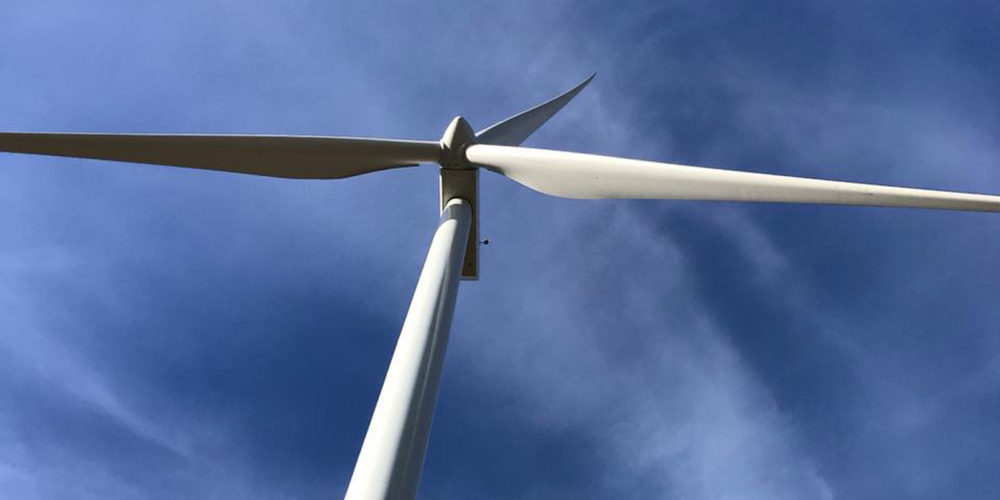
Wisconsin utility commitments set the stage
As audacious as it may appear, Evers’ clean energy goal is actually in line with recent utility commitments to decarbonizing their generation mix. Whether set at 80% or at 100% by 2050, the level of carbon reductions that Wisconsin electric providers have publicly embraced are ambitious, when compared with current levels. In 2018, the percentage of renewable and nuclear generation combined, relative to total sales, was approximately 25%. We’ll probably need to quadruple today’s volume of carbon-free electricity, depending on how much energy efficiency reduces our consumption compared with how much transportation and other direct uses of fossil fuels become electrified by 2050. No matter what happens, this transition will require a concerted and sustained push on the part of every electric provider.
Fortunately for the state’s utilities, there has never been a more propitious time to invest in carbon-free electricity, especially from wind and solar plants, than right now. The capital costs of new wind and solar farms are at their all-time lows, and their operating costs are a fraction of what it costs to buy the fuel for coal and natural gas plants operating today.
The signs that utilities are seizing this opportunity are multiplying. As they move to permanently shutter older and less efficient coal- and natural gas-fired generators, Wisconsin power providers are either busy purchasing more renewable electricity from new plants or building more solar and wind farms for themselves.
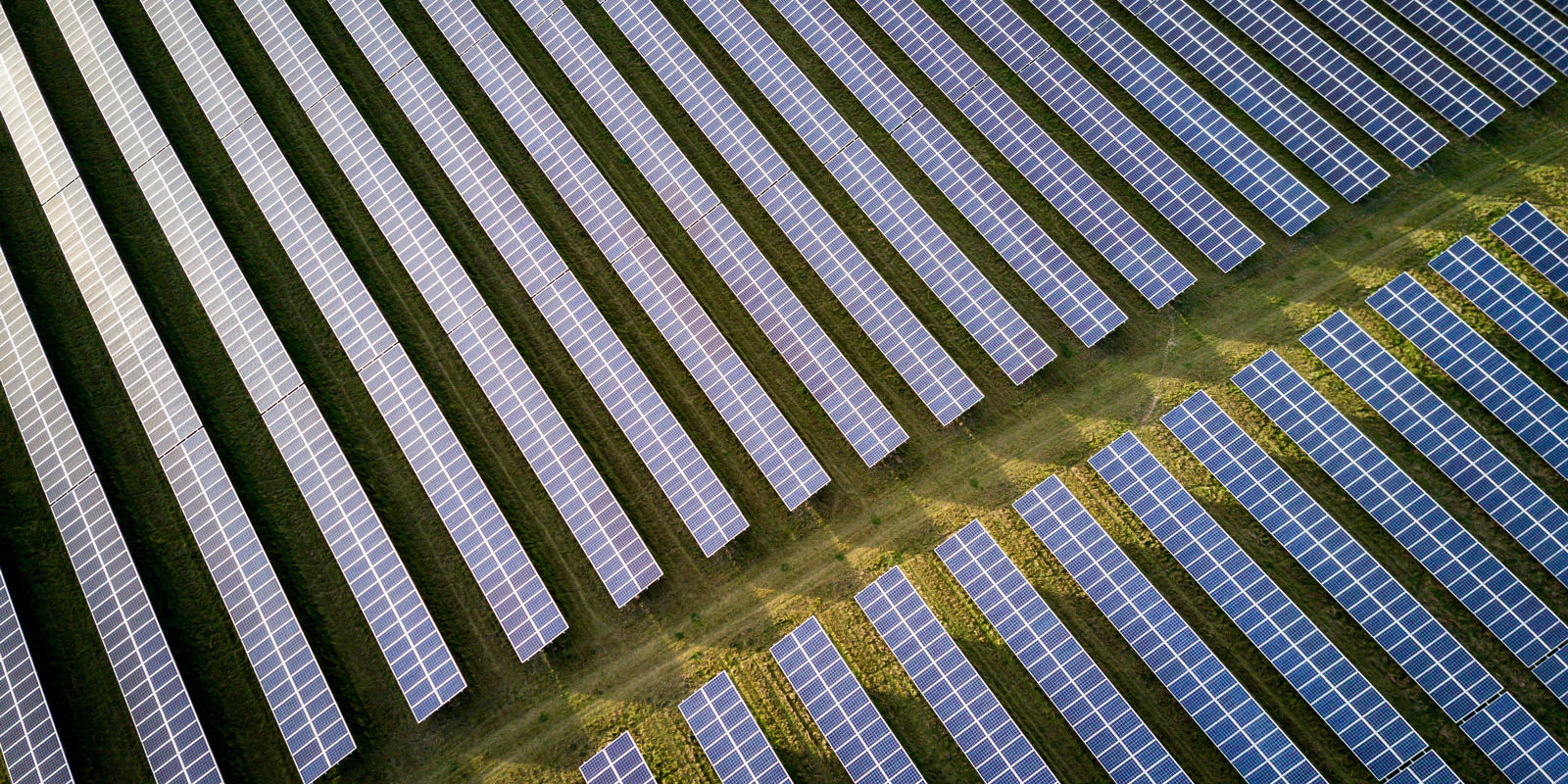
Powering up Wisconsin agriculture
In the week following Governor Evers’ Executive Order, ground was broken for the Two Creeks plant, one of the two large solar plants owned by Madison Gas and Electric and WEC Energy. Located a mile from the Point Beach Nuclear Power Plant, this 800-acre solar farm will, by itself, more than double existing solar capacity when completed next year, from 120 megawatts (MW, measured in AC or alternating current) to 270 MW.
That total will more than double again when the 300 MW Badger Hollow solar farm, located in Iowa County, becomes fully operational at the end of 2021. And other Wisconsin utilities, WPPI Energy and Dairyland Power, have signed power purchase agreements from 249 additional megawatts of solar from two projects, both of which are now seeking approval from the Public Service Commission and could also be built in 2020-2021.
Solar farms deliver far more value to the public and the planet than simply megawatt-hours of electricity produced and tons of carbon dioxide avoided. There are also the jobs that go into the construction of these arrays, the revenues that allow farmers to keep farming their land, revenue payments to local governments that host the projects, and the rich habitat for pollinators and wildlife that is created as the soil recharges. Harnessing solar energy for productive purposes has been and will continue to be integral to Wisconsin agriculture.
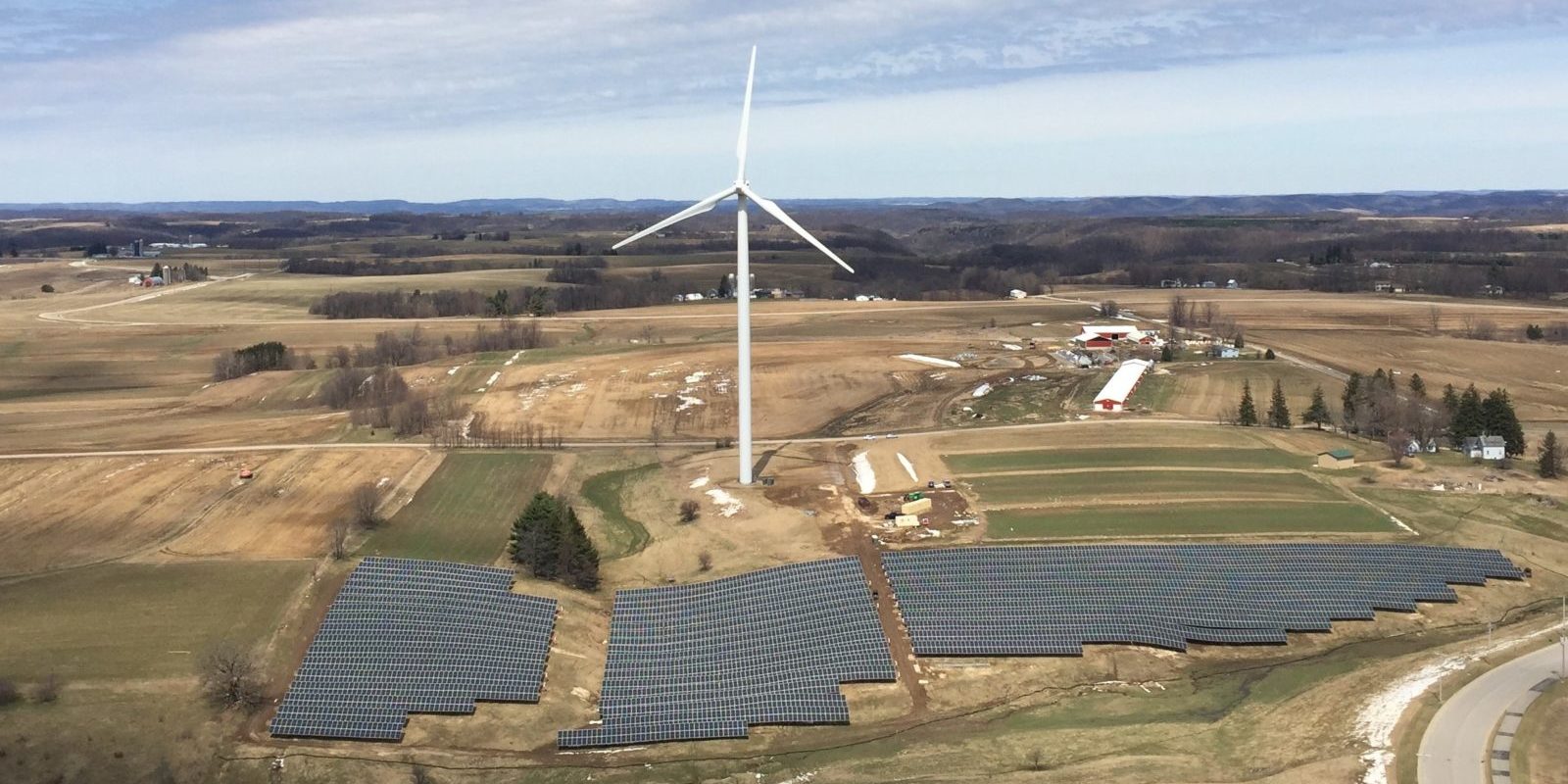
Meet the 100% renewable energy club
To put an exclamation mark on the last point, one of the most productive actors on the American agriculture scene—LaFarge-based Organic Valley Cooperative—financed the construction of two smaller solar farms in western Wisconsin. These two arrays—one in Arcadia and the other in Cashton—were energized last month and are now sending power into the grid.
That new increment of renewable electricity, when added to Organic Valley’s previous investments in solar and wind power, will enable the cooperative to offset 100% of its electricity use from zero-carbon, renewable sources. Organic Valley is the largest U.S. food brand to have accomplished that feat.
Organic Valley is the second Wisconsin enterprise to achieve a 100% renewable electricity goal. The first was La Crosse-based Gundersen Health System, which achieved that milestone five years ago through a combination of intensive efficiency measures and small-scale renewable power projects, usually off-site. In addition to reducing its energy overhead and passing the savings along to the people it serves, Gundersen wanted also to lead by example, demonstrating to the health care industry that sustainable energy is “healthy, socially responsible and economically beneficial.”
It is not unrealistic to expect that, in the next 10 years, hundreds of businesses and local governments will manage to achieve the same feat pioneered by Gundersen and Organic Valley.
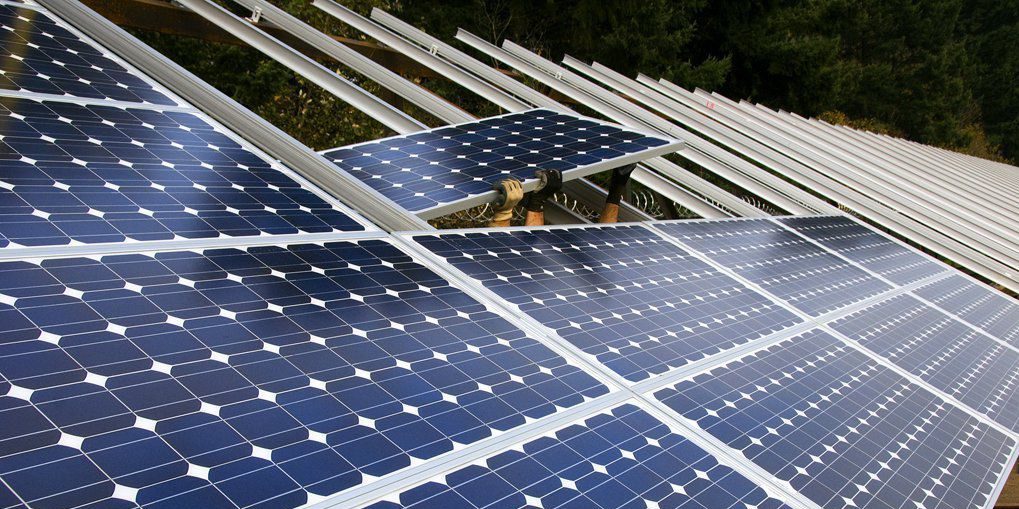
Connecting customers to solar power
When Gundersen pursued energy efficiency to reduce its energy overhead and generate carbon-free electricity as offsets, it had to settle on a path that effectively bypassed the electric providers serving their facilities. But some utilities are no longer content to stand on the sidelines while their customers sponsor new clean energy generation by their own initiative. Newer services such as shared solar and renewable energy sleeve tariffs enable self-selecting customers and utilities to partner on new clean power projects.
For example, Xcel Energy’s Solar*Connect Community program has been particularly successful in eliciting customer subscriptions to purchase electricity produced from new solar arrays in western Wisconsin. While there is an up-front cost to this service, the price of solar power is fixed, and may over time become less expensive than standard electricity, depending on the size and frequency of future rate increases.
It’s worth noting that this is not a required service in Wisconsin, and therefore many residents and businesses here do not have access to a utility-provided shared solar service. Expanding shared solar throughout the state would allow more residents and businesses to benefit from the clean energy evolution.
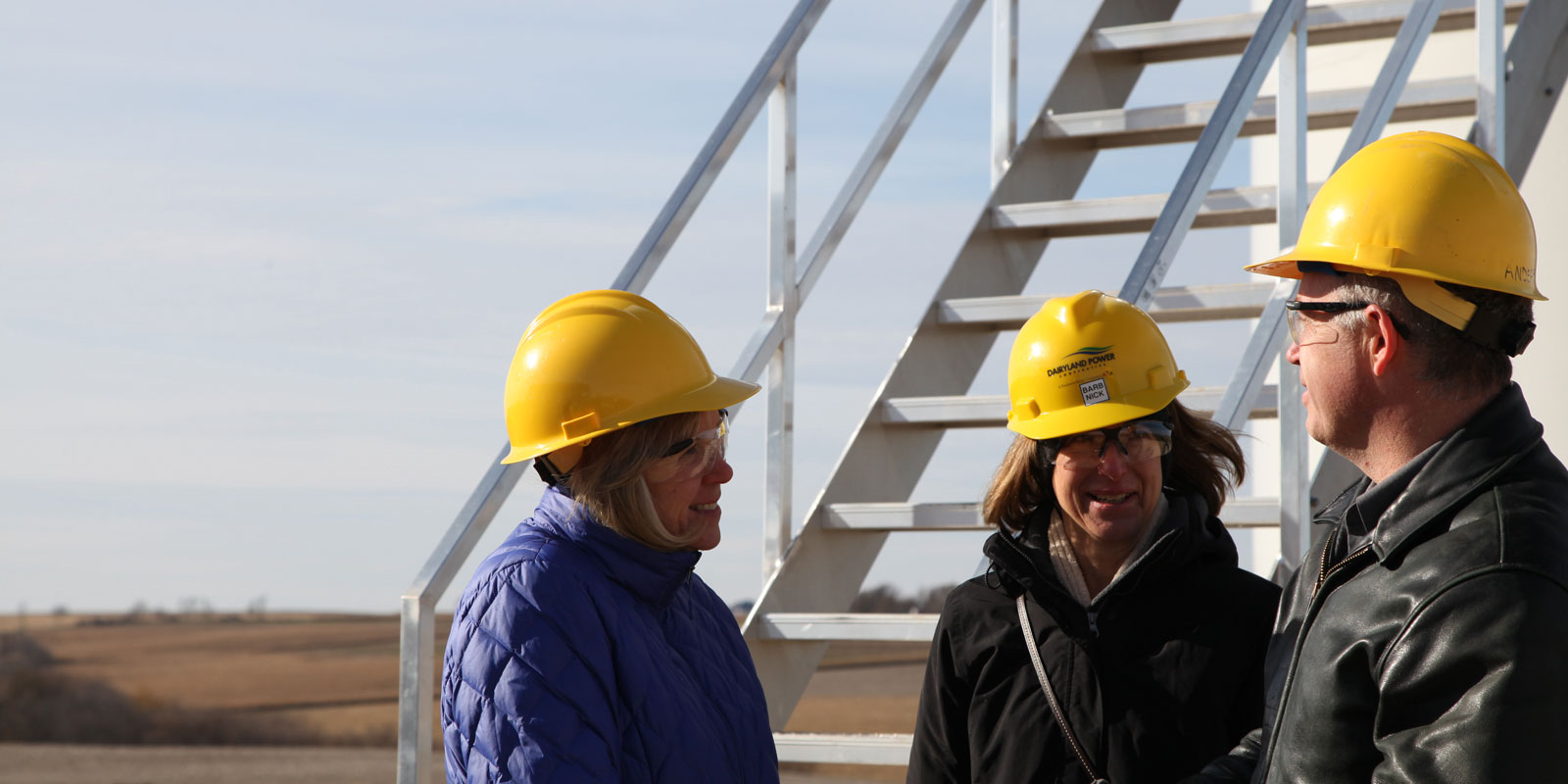
Wind power returning for duty
Back in 2006, when Wisconsin’s renewable energy standard was raised to its current level, wind power was poised to become the workhorse of the renewable electricity world. It did become so in several states, among them Texas and Iowa. But while wind power supplies 16% of Texas’ electricity and nearly 40% of Iowa’s power, Wisconsin’s rancorous siting and permitting climate has severely hobbled wind’s growth here since 2011. Right now, wind accounts for about 2.5% of electricity produced in the Badger State. Wisconsin utilities own, or buy power from, wind farms in other states which, if included, brings the total amount of wind being credited to Wisconsin customers to about 7% of the state’s electricity consumption.
Wind development activity is beginning to rebound, however, especially in the southwestern part of the state. But it will need to spread beyond the small pockets of the state where the current population of wind farms now operate. With capital costs going down and turbine productivity going up, wind development can occur cost-effectively over a wider swath of Wisconsin than what was considered suitable 10 years ago.
And why not include Lake Michigan among the areas that can host tomorrow’s wind farms? Engineering advances and improvements in foundation design make offshore wind power in waters deeper than 100 feet a feasible option. The ripple effects through the eastern Wisconsin economy would be substantial, especially for companies that manufacture cranes and marine construction vessels. Offshore wind can happen here with the right leadership.
But while the picture for wind power going forward remains uncertain, it’s all systems go for solar power. What is now an affordable resource for power providers is also an equally attractive option for electricity customers of all sizes, classes, and groupings, whether the solar array is dedicated to one home or business or to a school district or local government. Partnerships forming around solar energy are multiplying across the state and much of the nation.
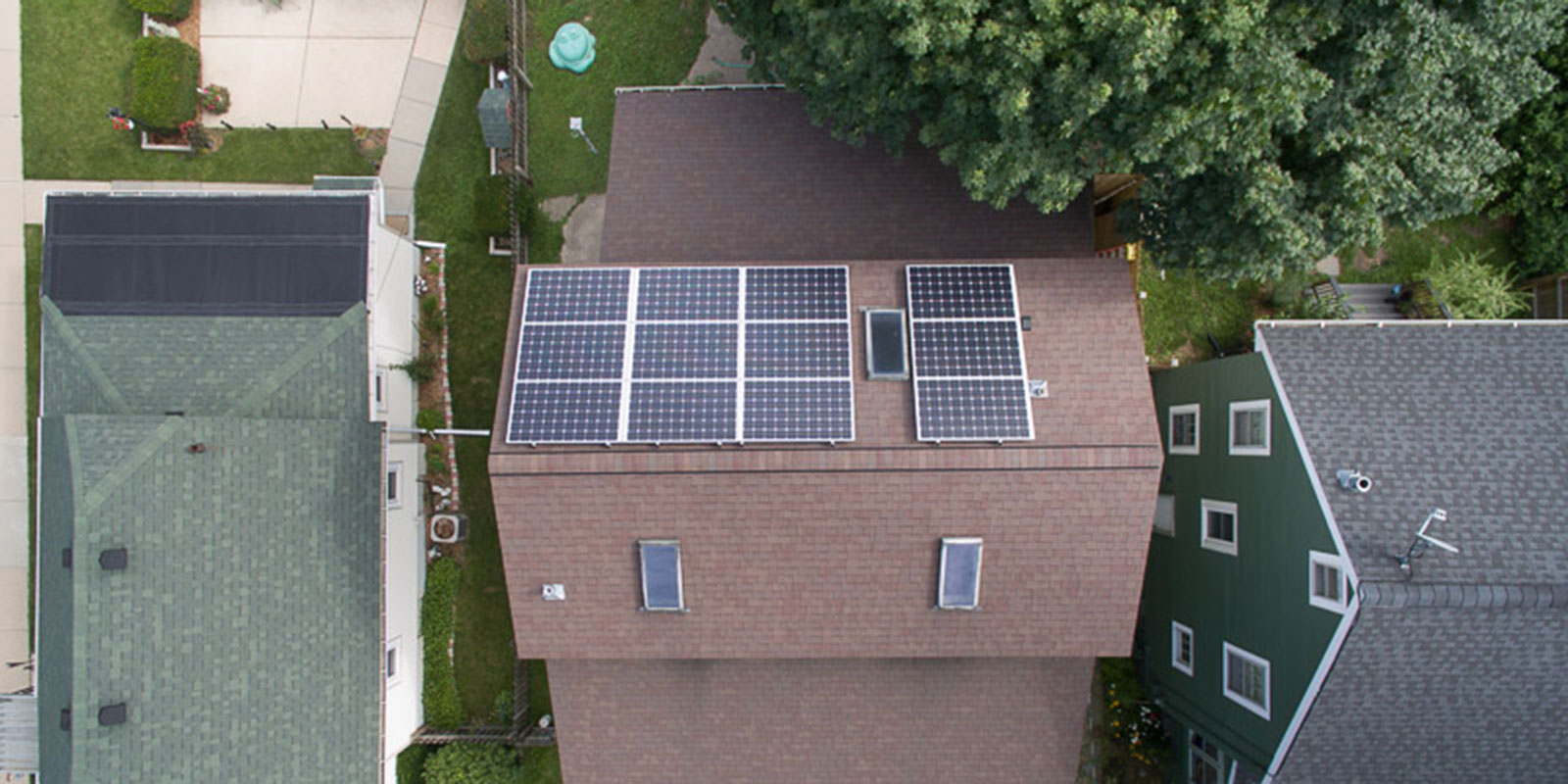
Customer-sited generation growing, but needs to be unleashed
From 2013 to 2018, customer-sited generation was the primary bright spot in Wisconsin’s renewable energy landscape. Customer-sited solar grew from 17 megawatts in 2013 to about 80 megawatts by year-end 2018, and the market continues to grow as the cost of installing solar power has declined. Initiatives like our Solar for Good and Faith & Solar programs have made solar power an affordable option for more than 40 nonprofits across Wisconsin, with 30 more working on projects this year.
But we know there are speed bumps, and it’s past time to fix them. The 20 kilowatt net metering threshold set by most of Wisconsin’s utilities often and unnecessarily limits the ability of customers, especially larger businesses and nonprofits, to supply themselves with renewable power. Generators that exceed the net metering threshold are penalized for exporting power to the grid.
This situation has especially been hard on Wisconsin’s biogas generators. After their initial contracts expire, biogas generators face the prospect of a 60% reduction in revenue flow. Many have already stopped generating electricity as a result, and are now flaring biogas instead.
With Wisconsin utilities now clearly moving towards building renewable power and retiring coal plants, it’s time to equalize the treatment of customer-sited renewable generators relative to large solar farms. If utilities need more daytime power capacity, they should credit distributed generators like solar and biodigesters at the same level that is accorded to their own renewable power plants. Our net metering rules need to be strengthened to capture more of the great potential and benefits that we know distributed generation brings to Wisconsin.
It’s also time to enable financing of clean energy systems, such as third-party leases and power purchase agreements, so that more low- and moderate-income Wisconsinites can take advantage of “pay as you go” solar energy financing options which are commonly available in more than half of the United States.
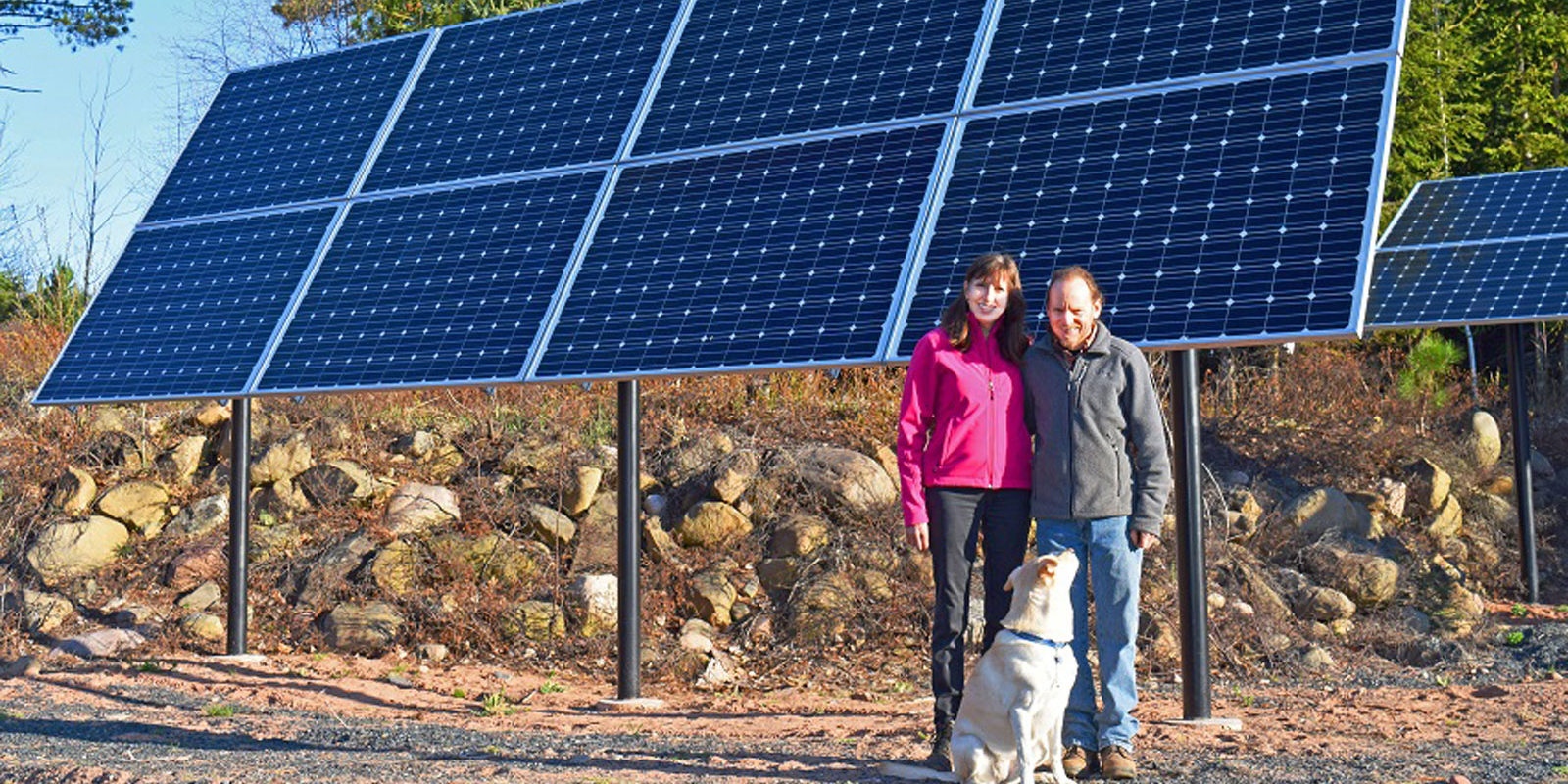
The value of partnerships
A particularly powerful example of solar partnerships can be found in the Ashland-Washburn-Bayfield area. Operating on a shoestring over its four-year history, Cheq Bay Renewables, an all-volunteer organization, has designed and developed several community-scale projects notable for their affordability and popularity. One of these is a solar group buy program, now in its second year, that has yielded nearly one megawatt of new capacity serving area homes, farms, and small businesses.
Supported initially by a $10,000 Solar in Your Community Challenge grant from U.S. Department of Energy (USDOE), the organization’s latest venture is set to deliver more than a dozen solar systems to schools, county-administered housing, wastewater treatment plants, and other public facilities in the Washburn-Bayfield area. Cheq Bay’s next project after that will put solar systems on three tribal buildings serving the Bad River Band of Lake Superior Tribe of Chippewa Indians. Half the funding for Bad River’s solar systems will come from U.S. DOE.
Through a combination of creativity, resourcefulness, and hard work, Cheq Bay Renewables has been the catalyst for the renewable energy transformation occurring in northern Wisconsin. Though the progress it has made thus far is nothing short of amazing, it wouldn’t be happening without all the partnerships that Cheq Bay has meticulously cultivated with local governments, federal and state agencies, electric providers, and sustainable energy professionals.
Partnerships like these are essential for getting the job done. And Executive Order 38 sets the stage for a new round of partnerships and collaboration to achieve the bold vision for Wisconsin’s clean energy future that Governor Evers and his Administration now embrace. From what’s happening on the ground, we know many initiatives are delivering results today, and these bright spots will be the foundation to creating a statewide clean energy success story.



